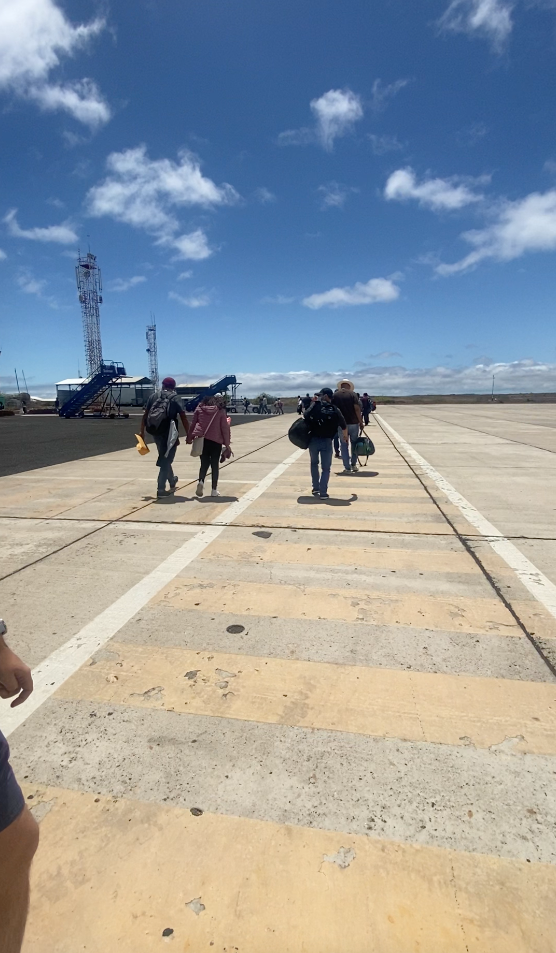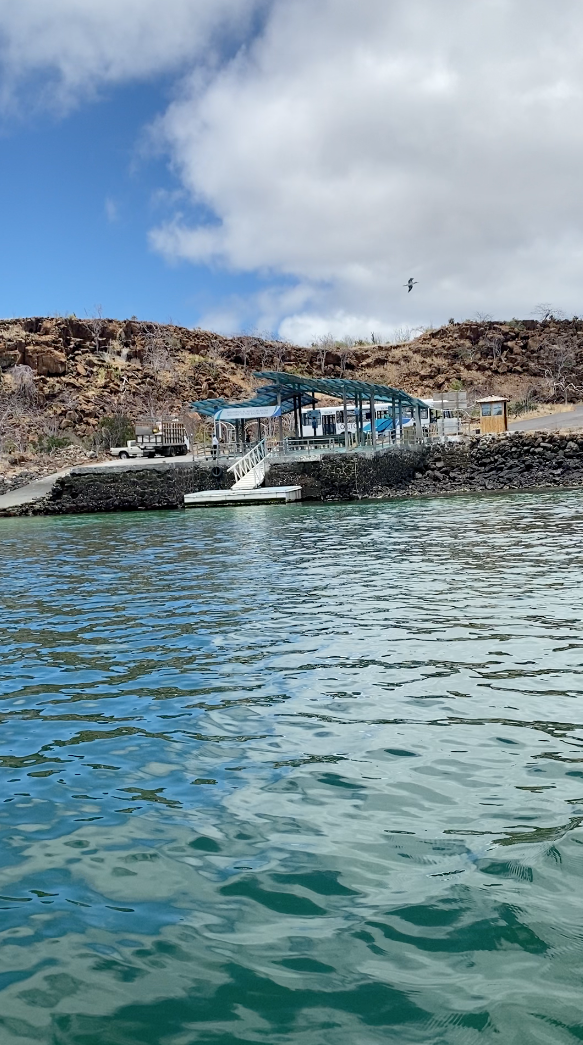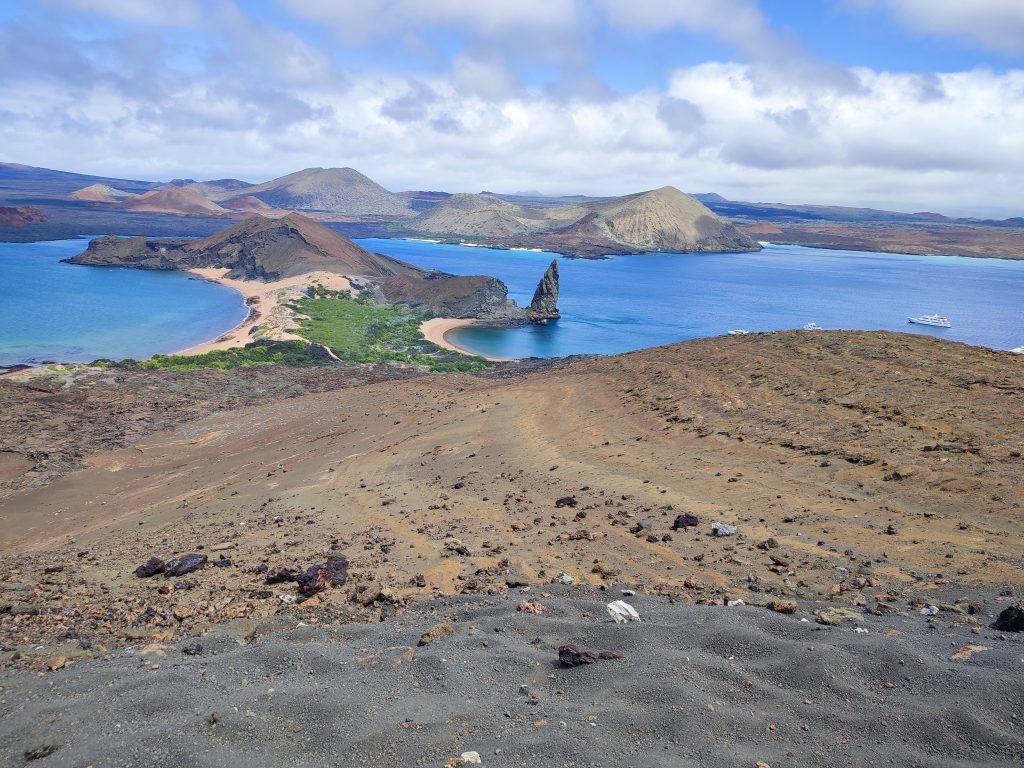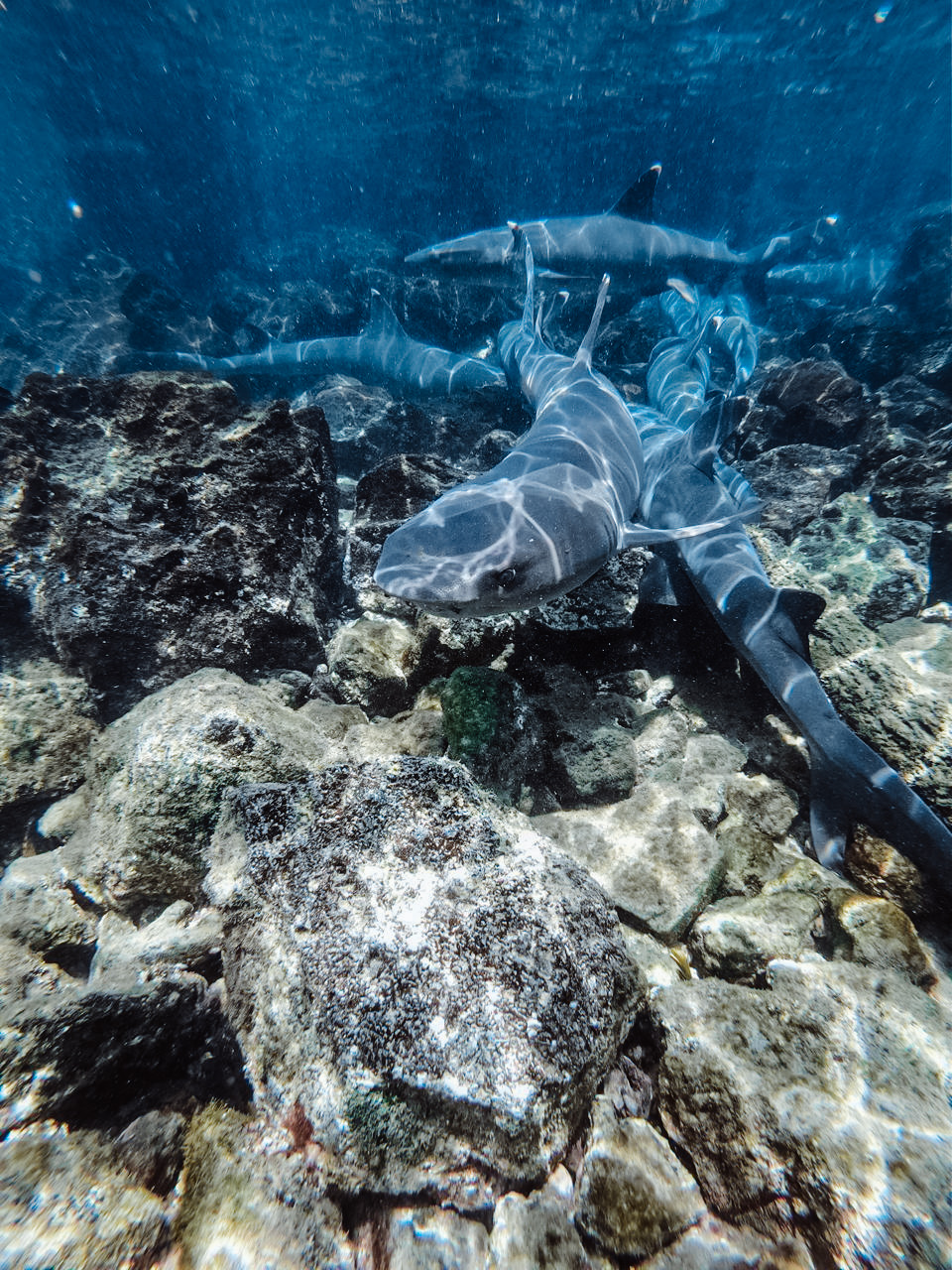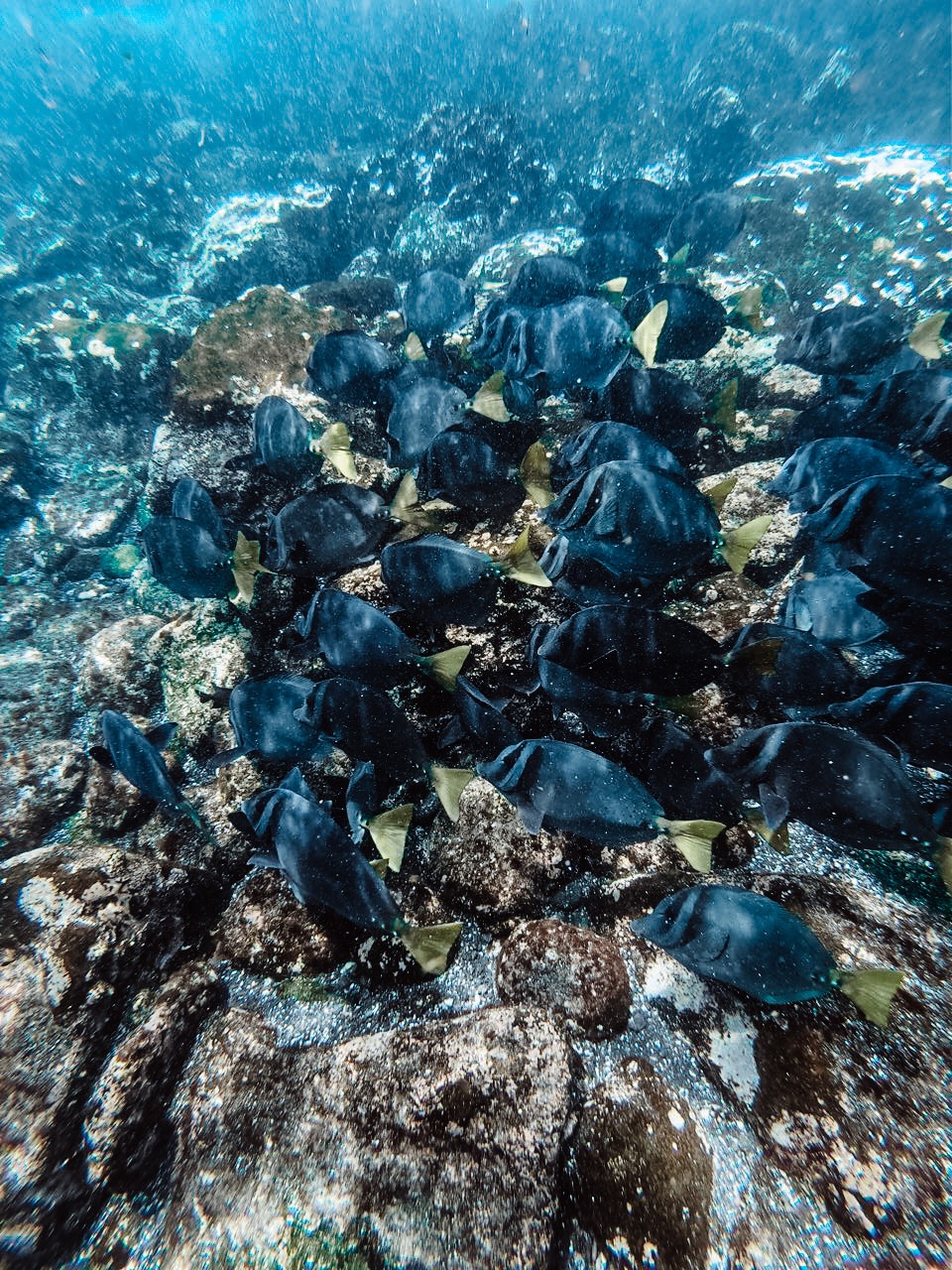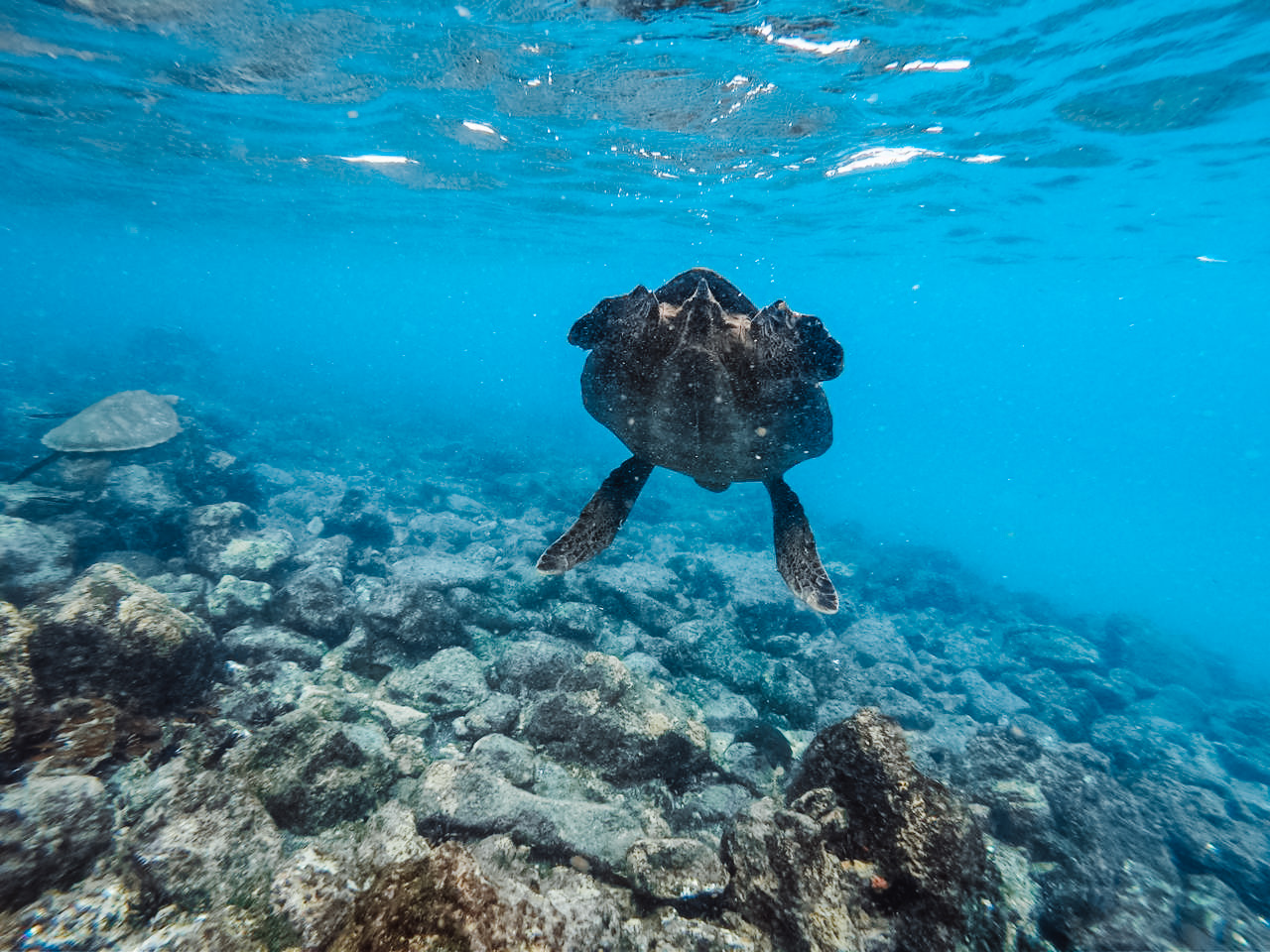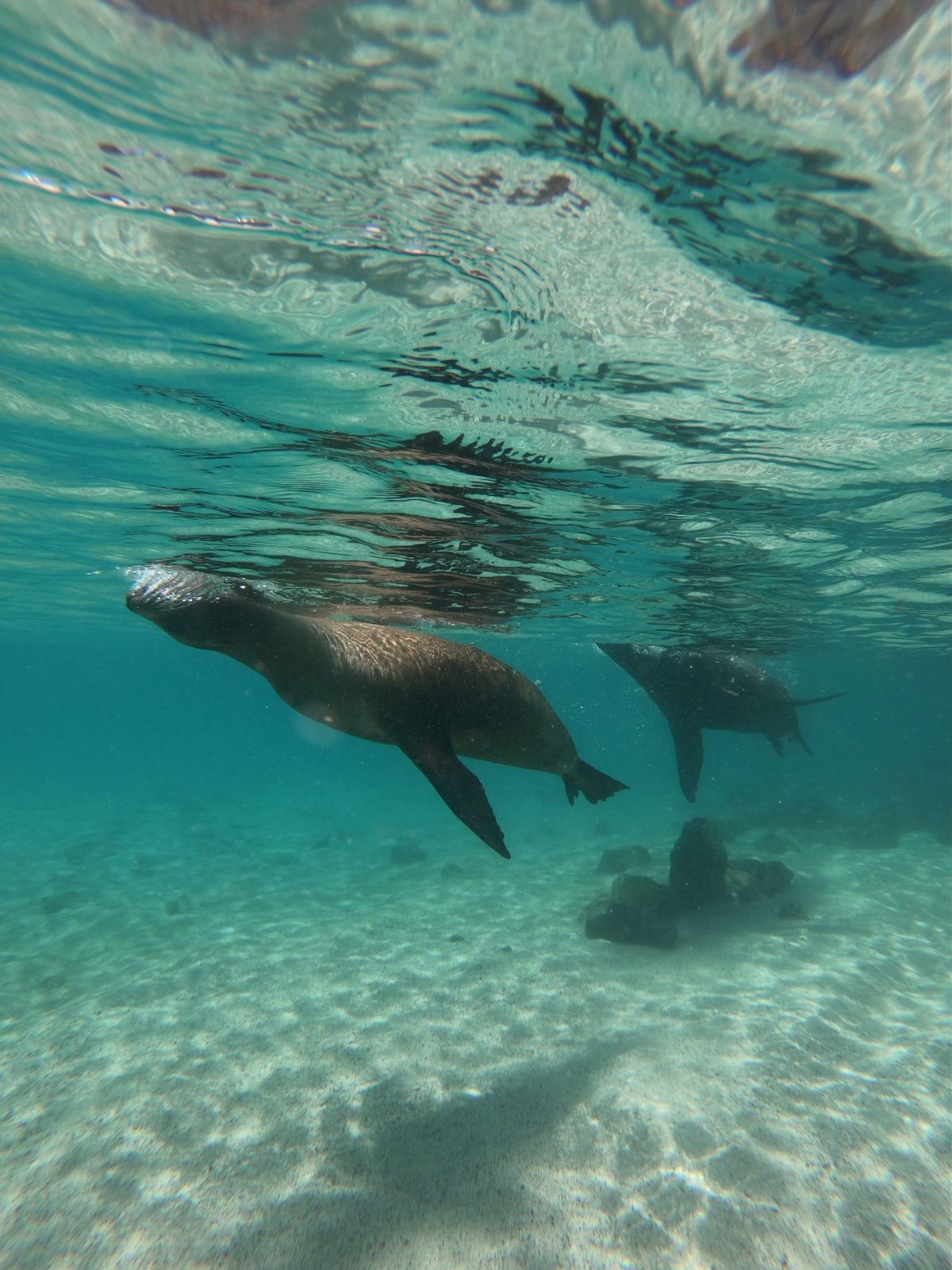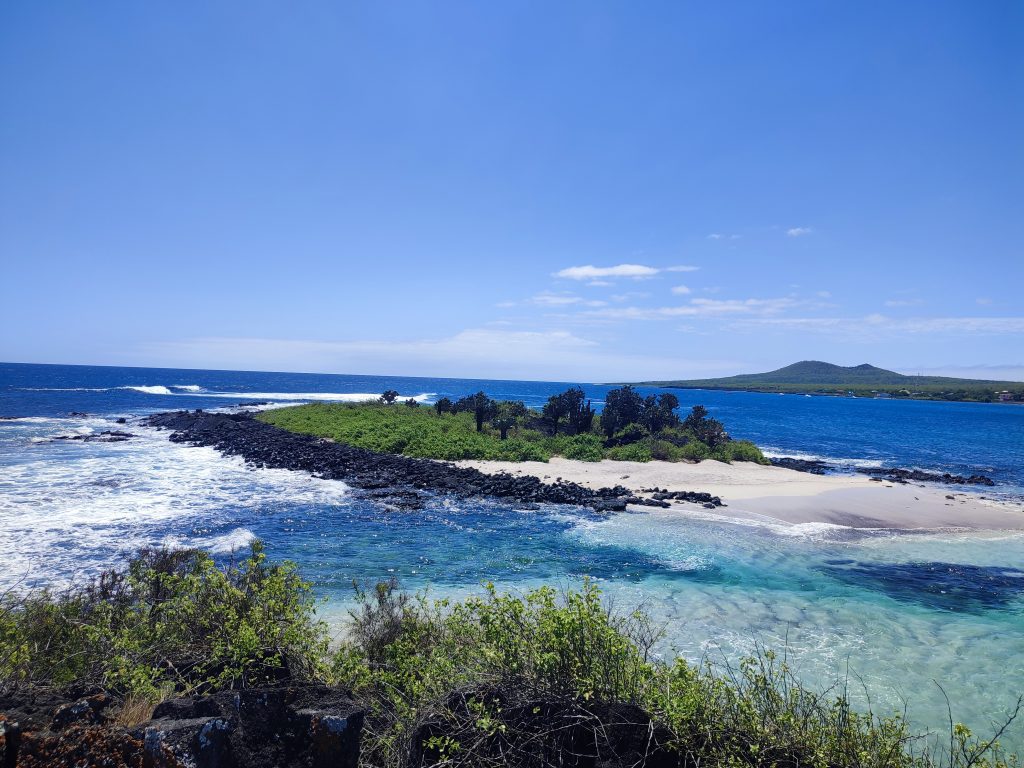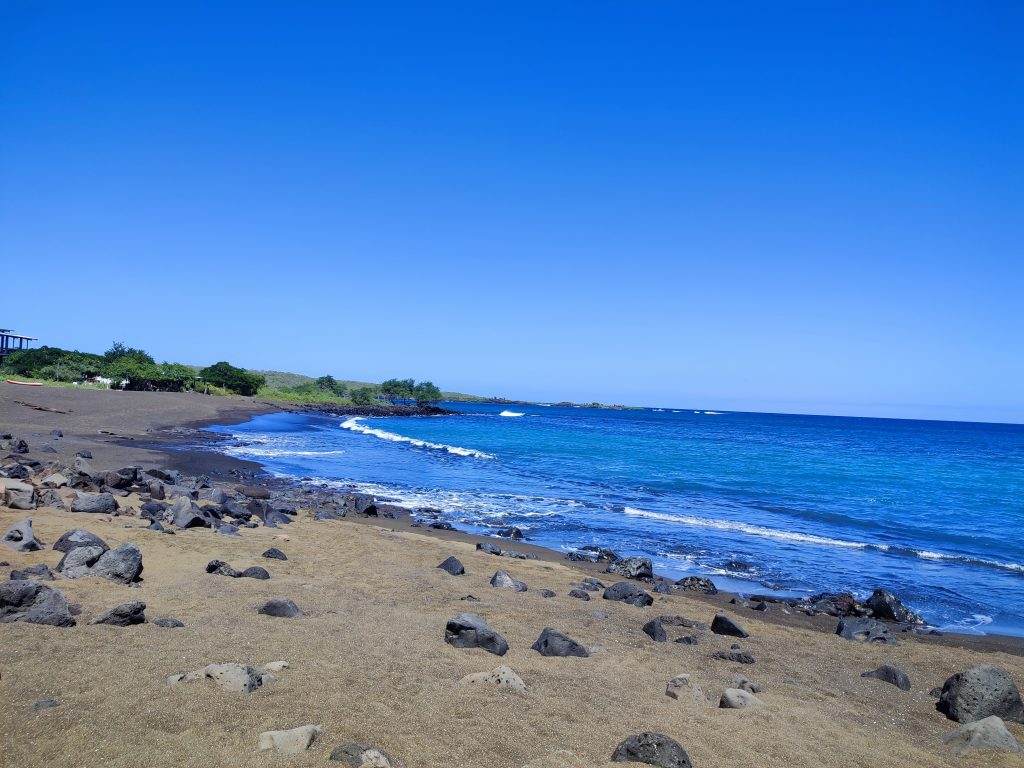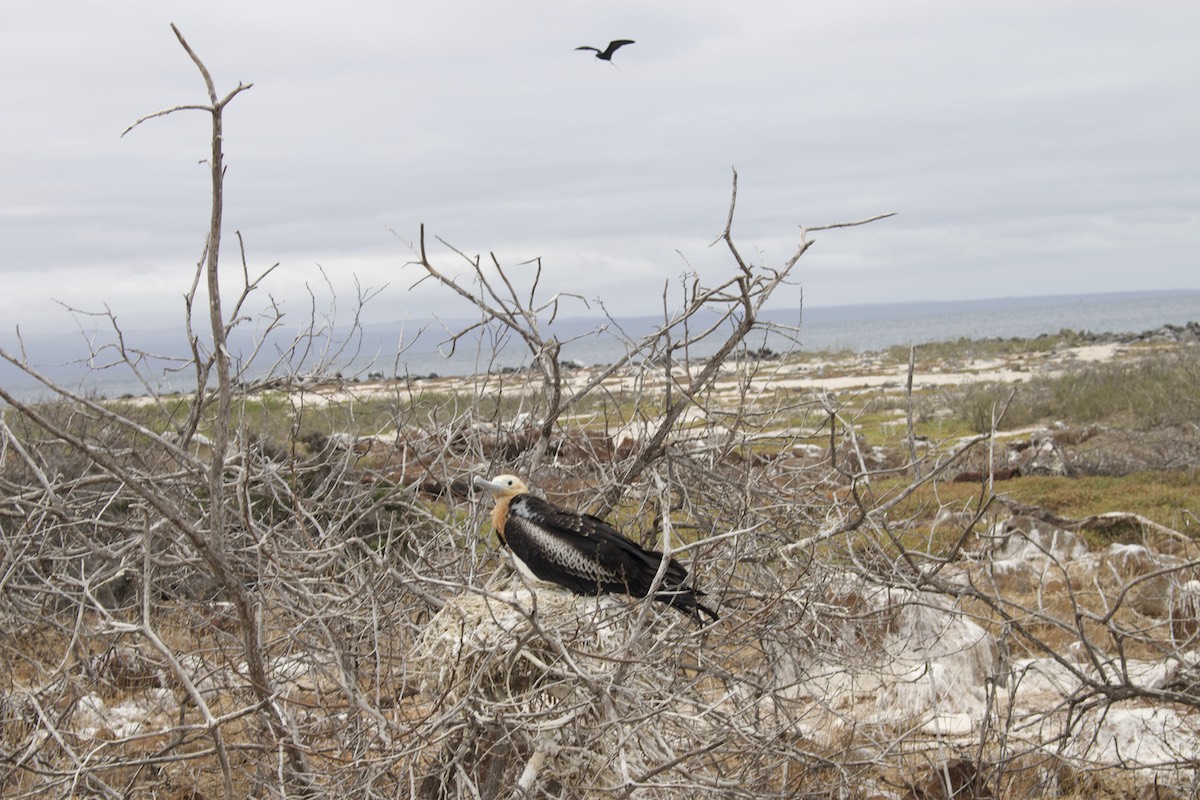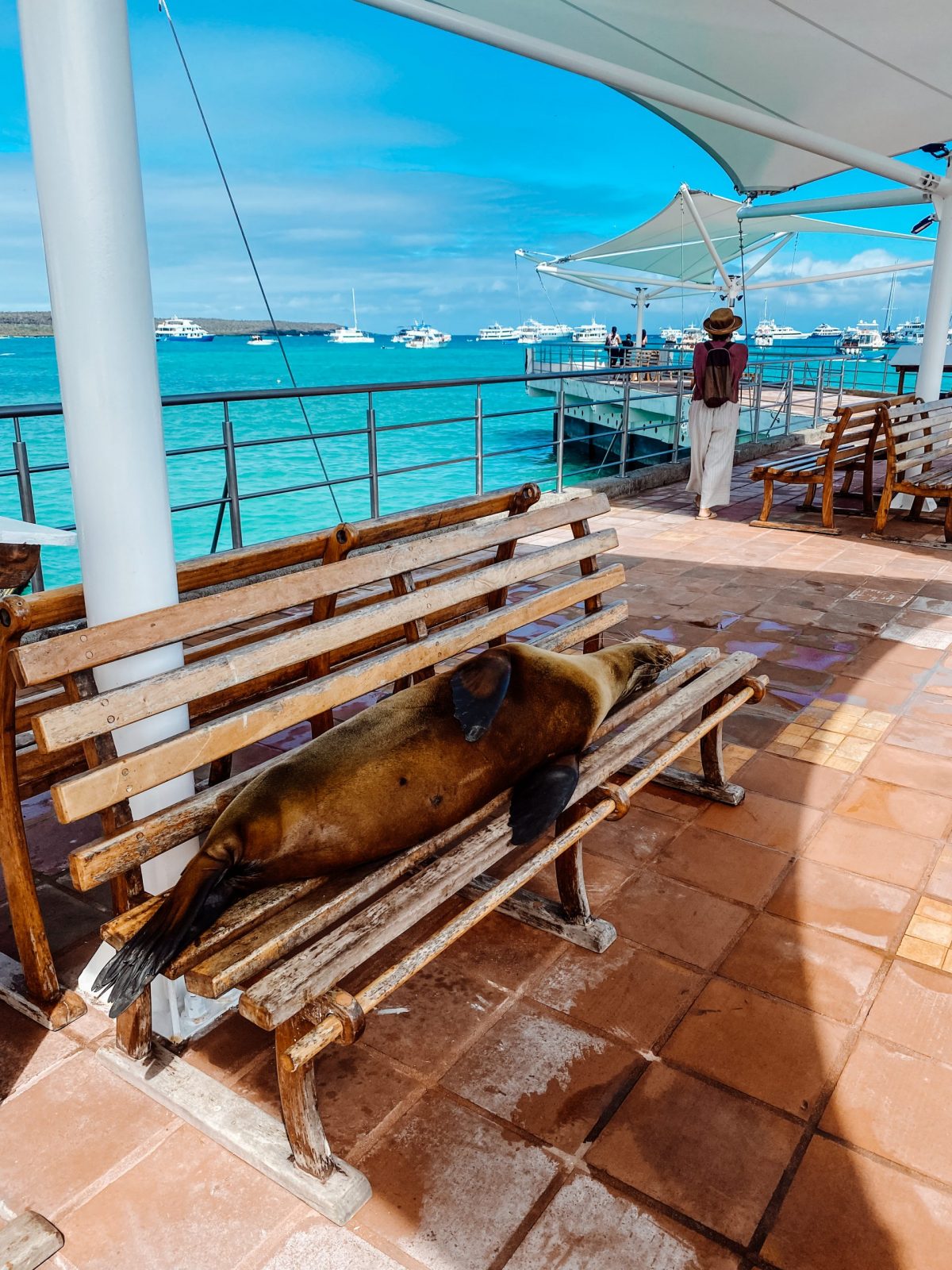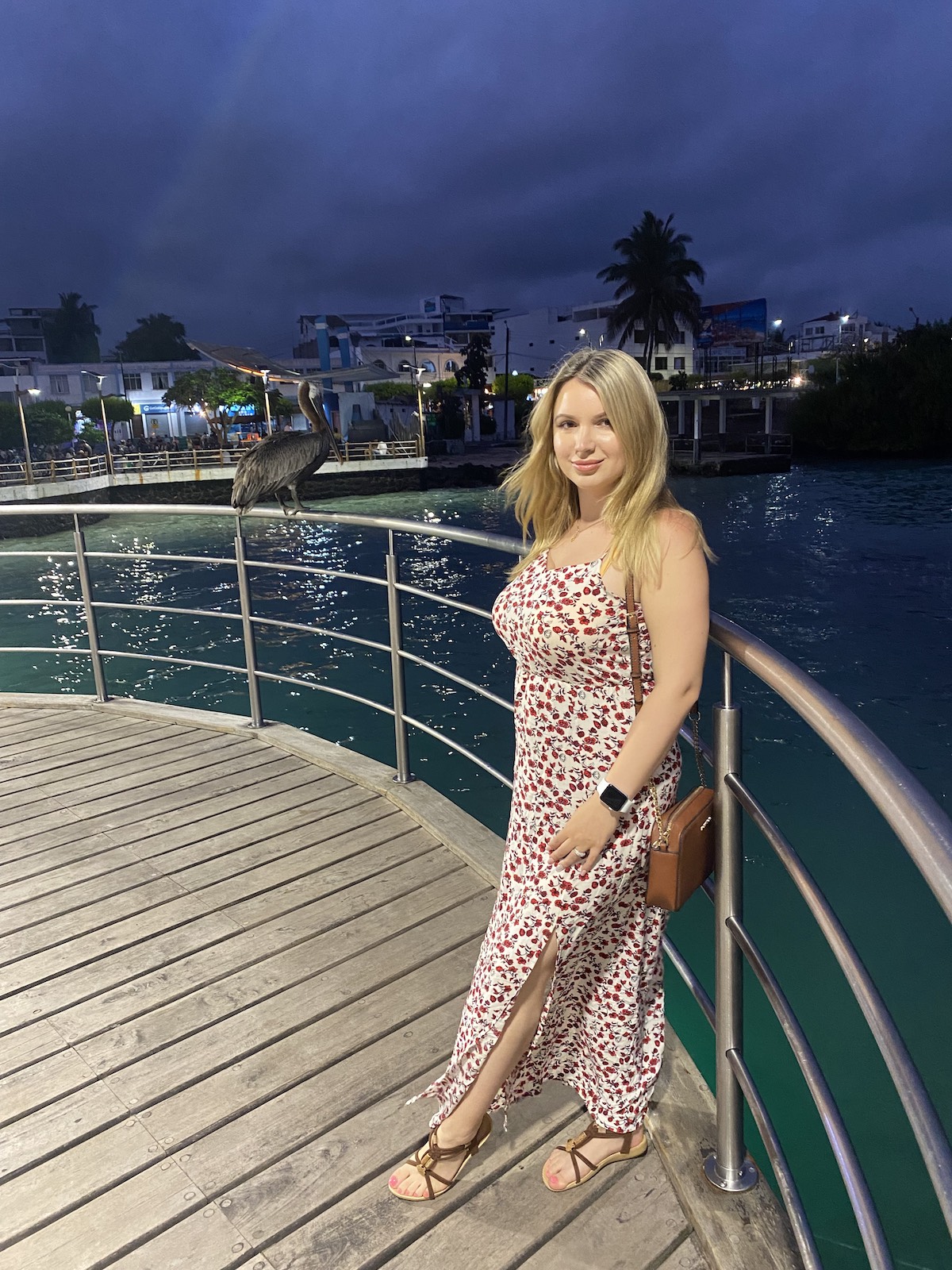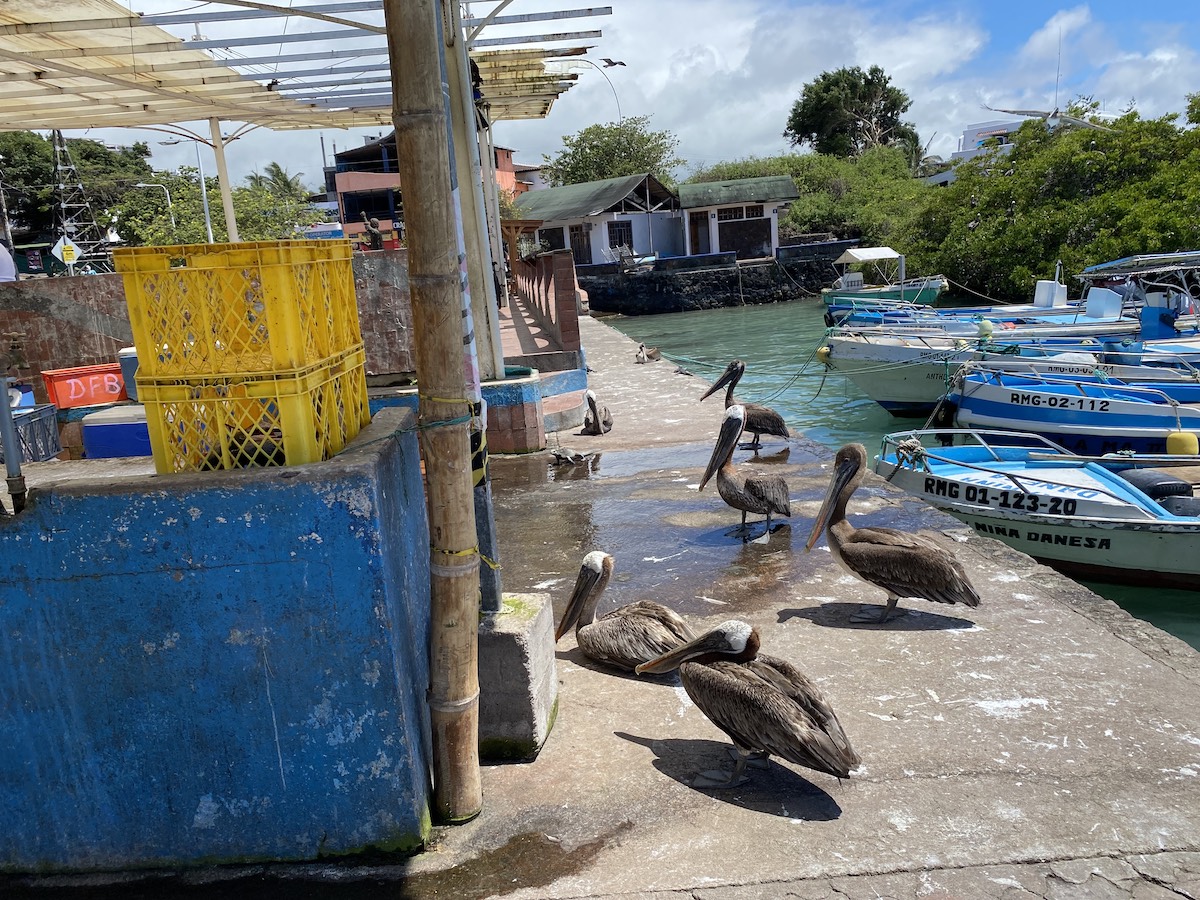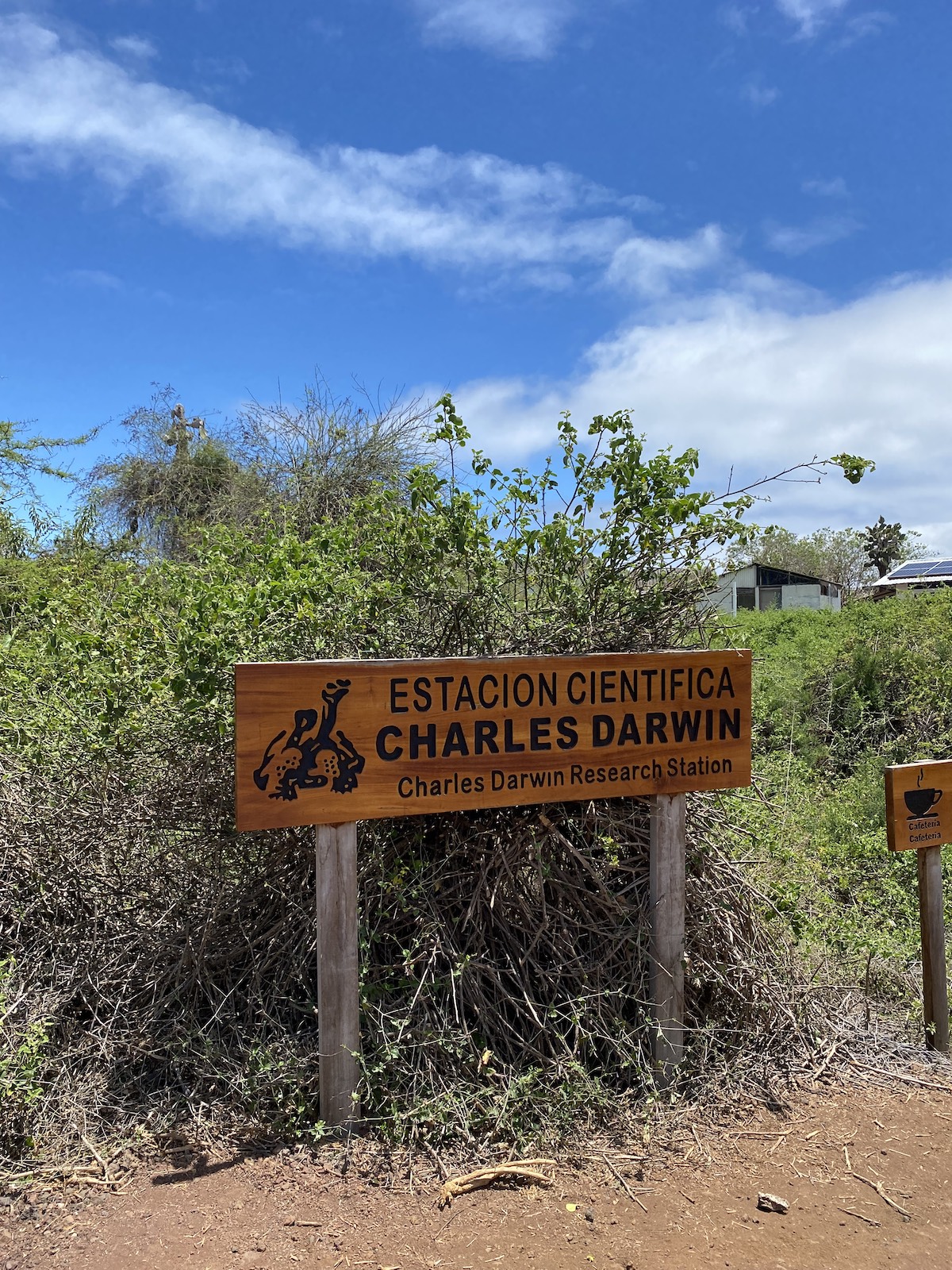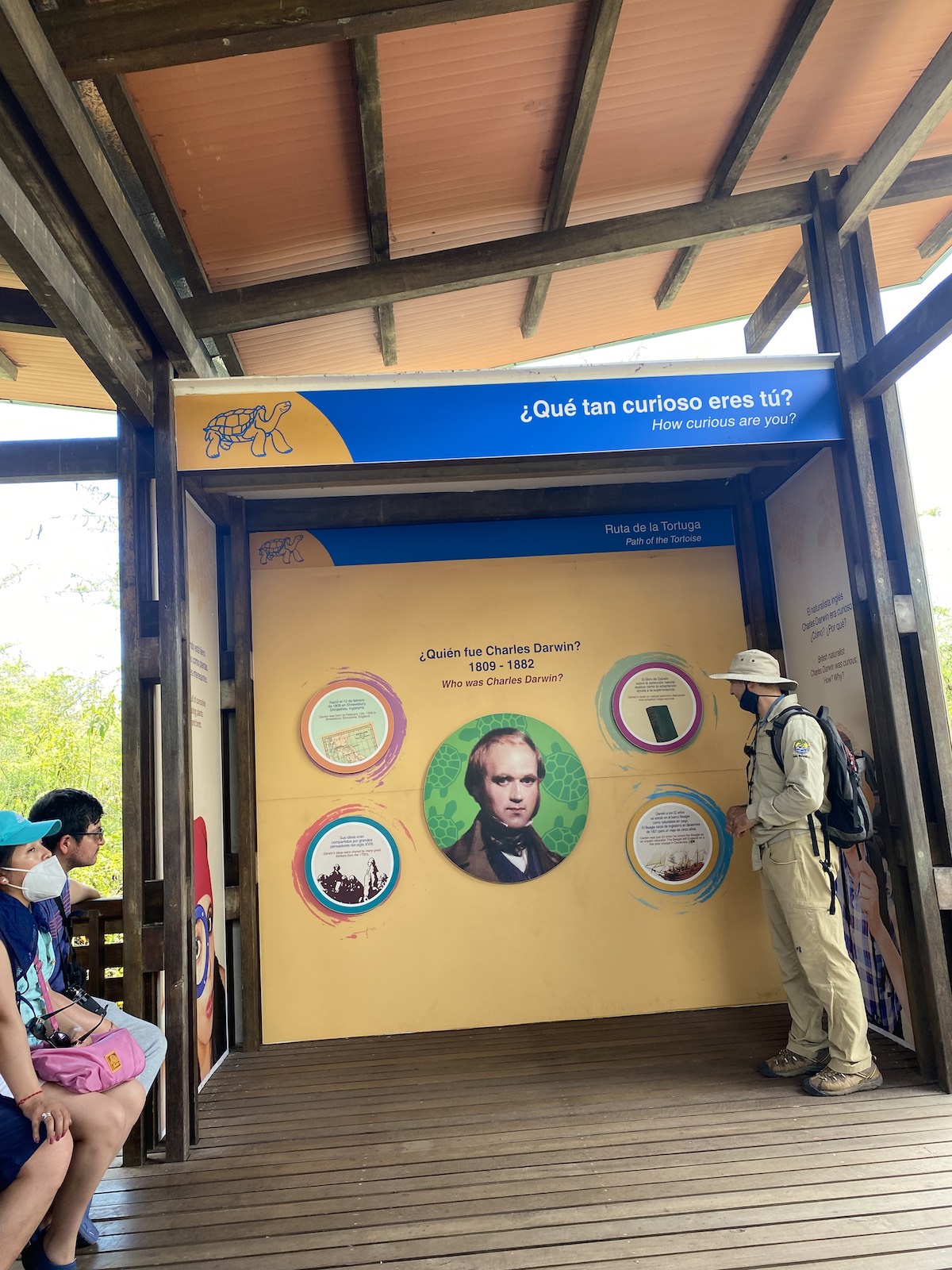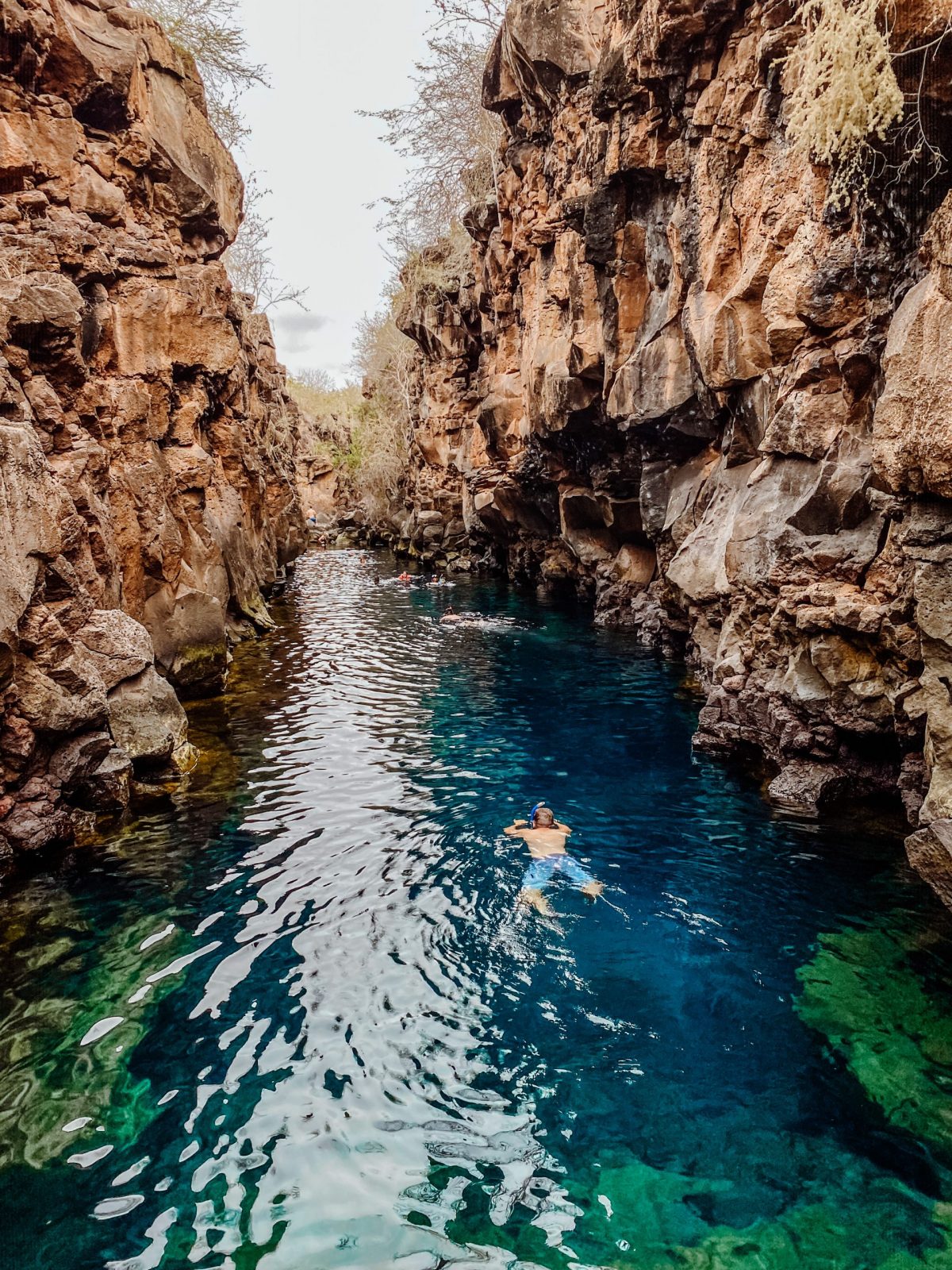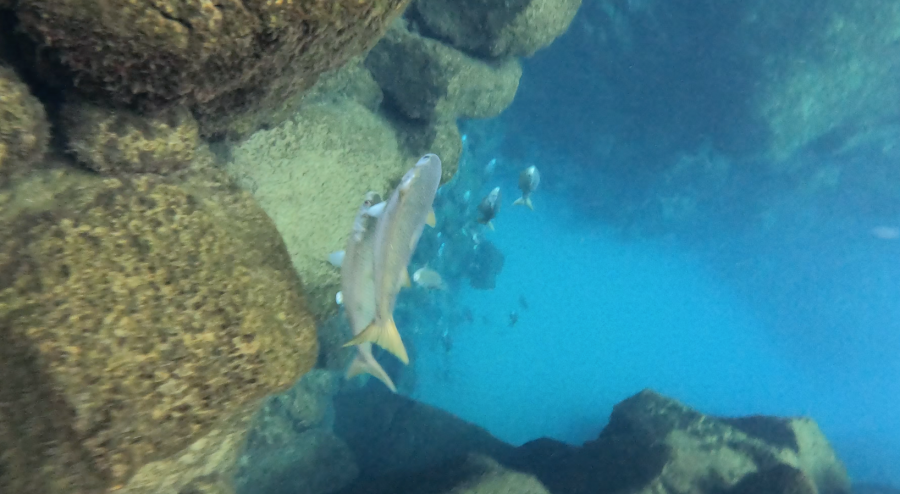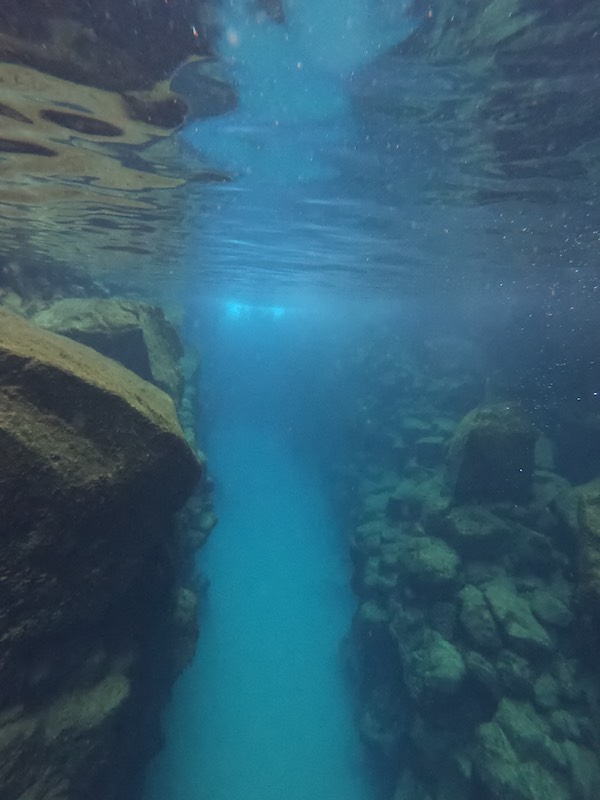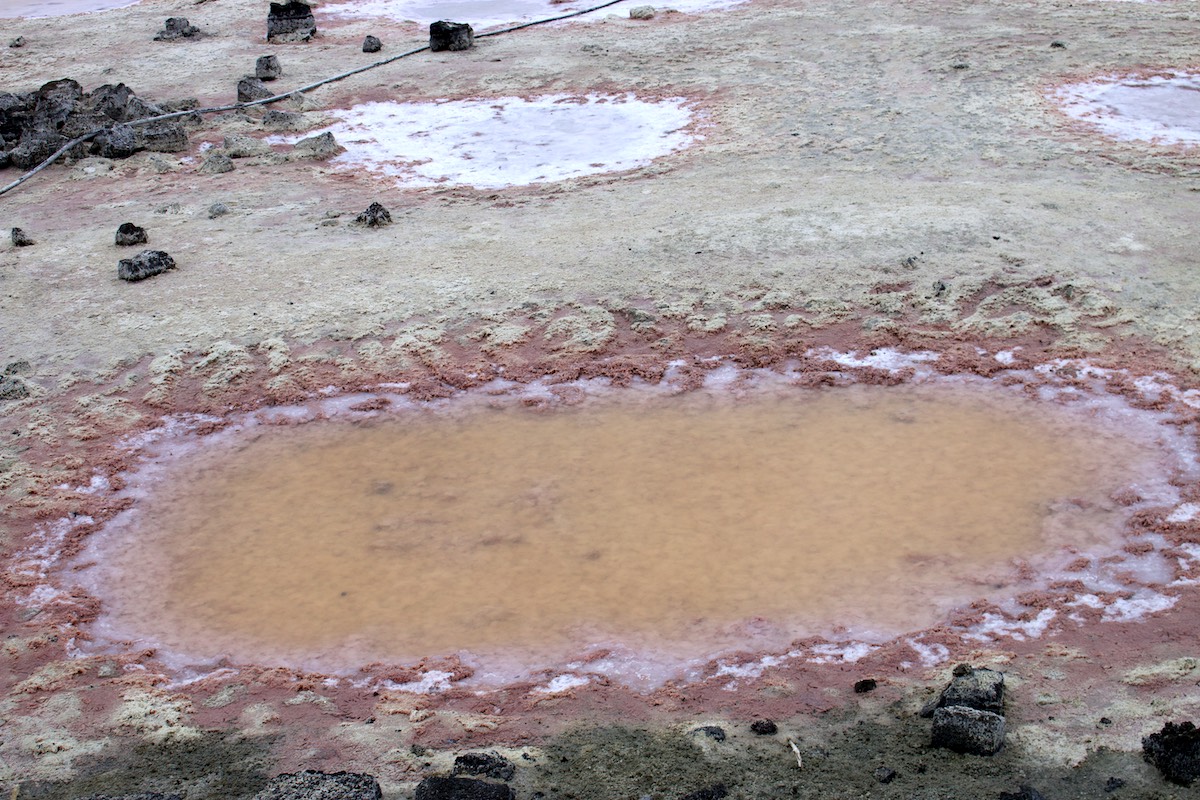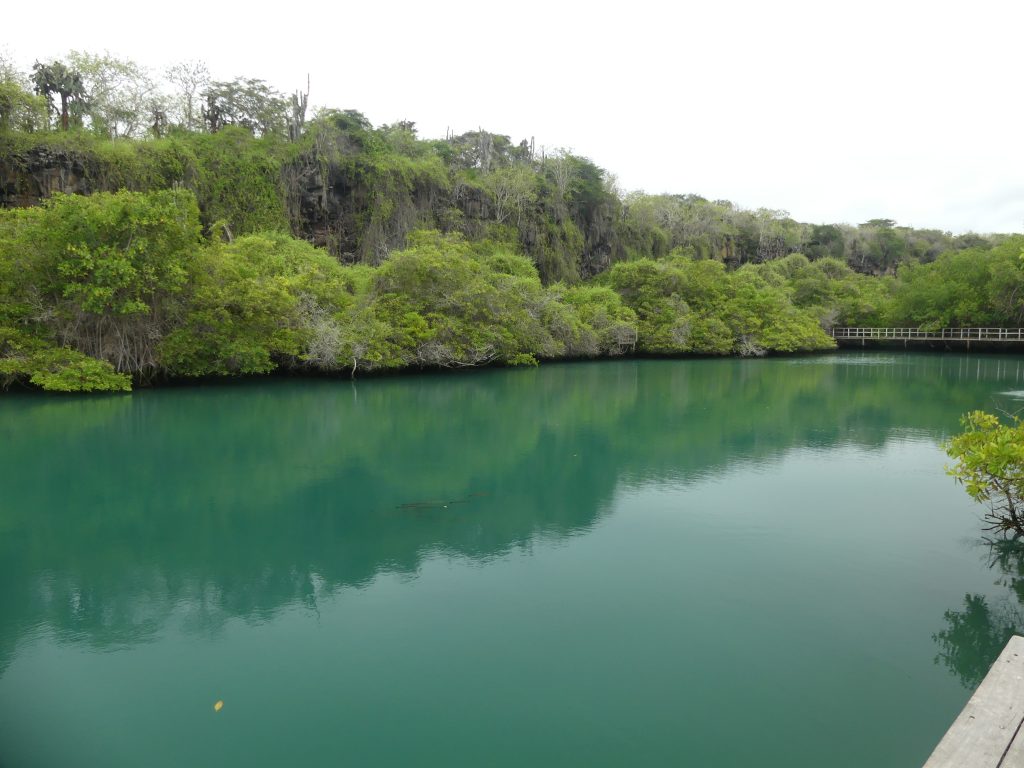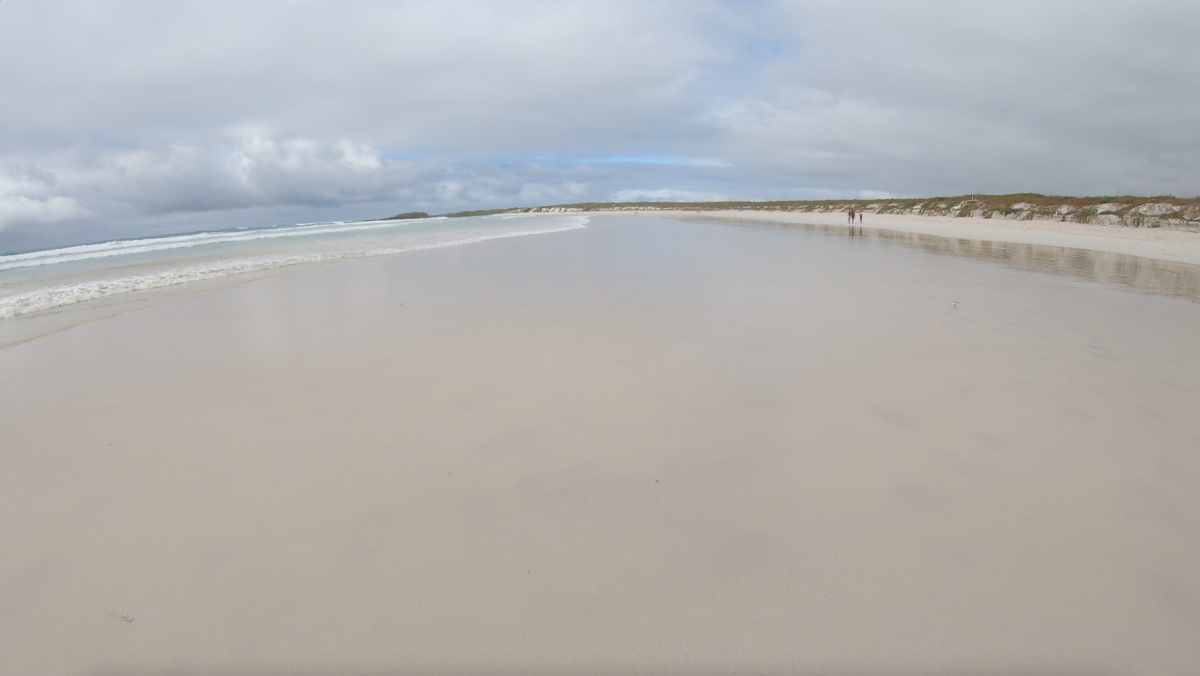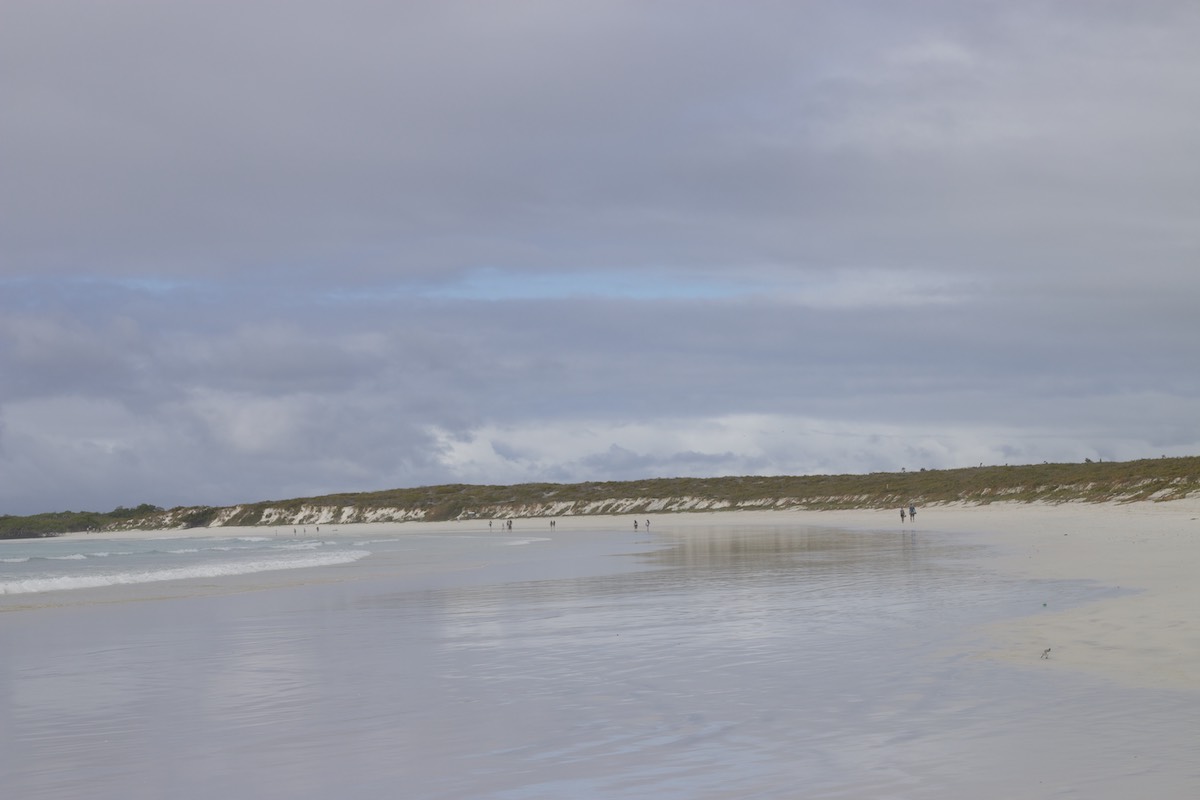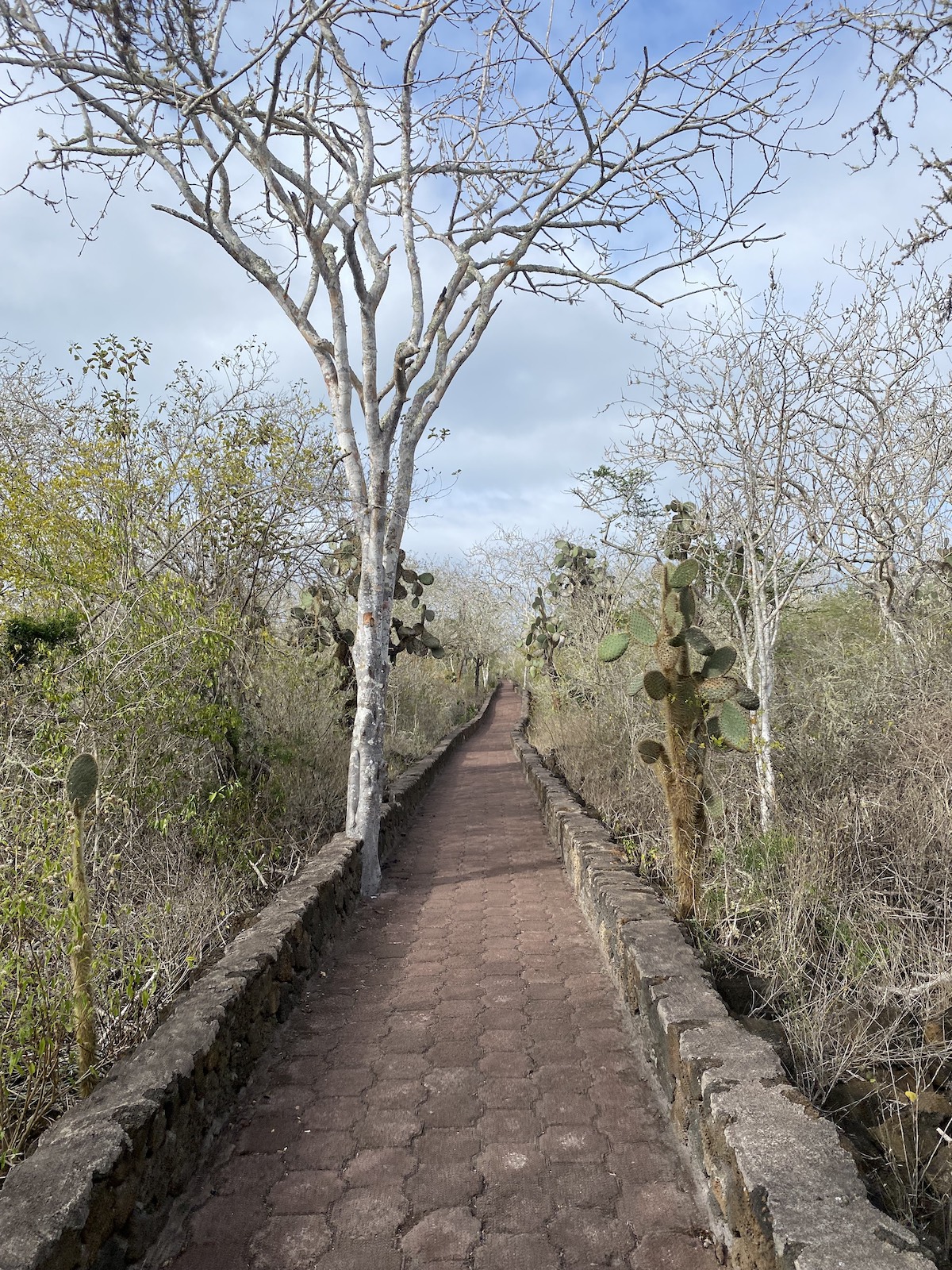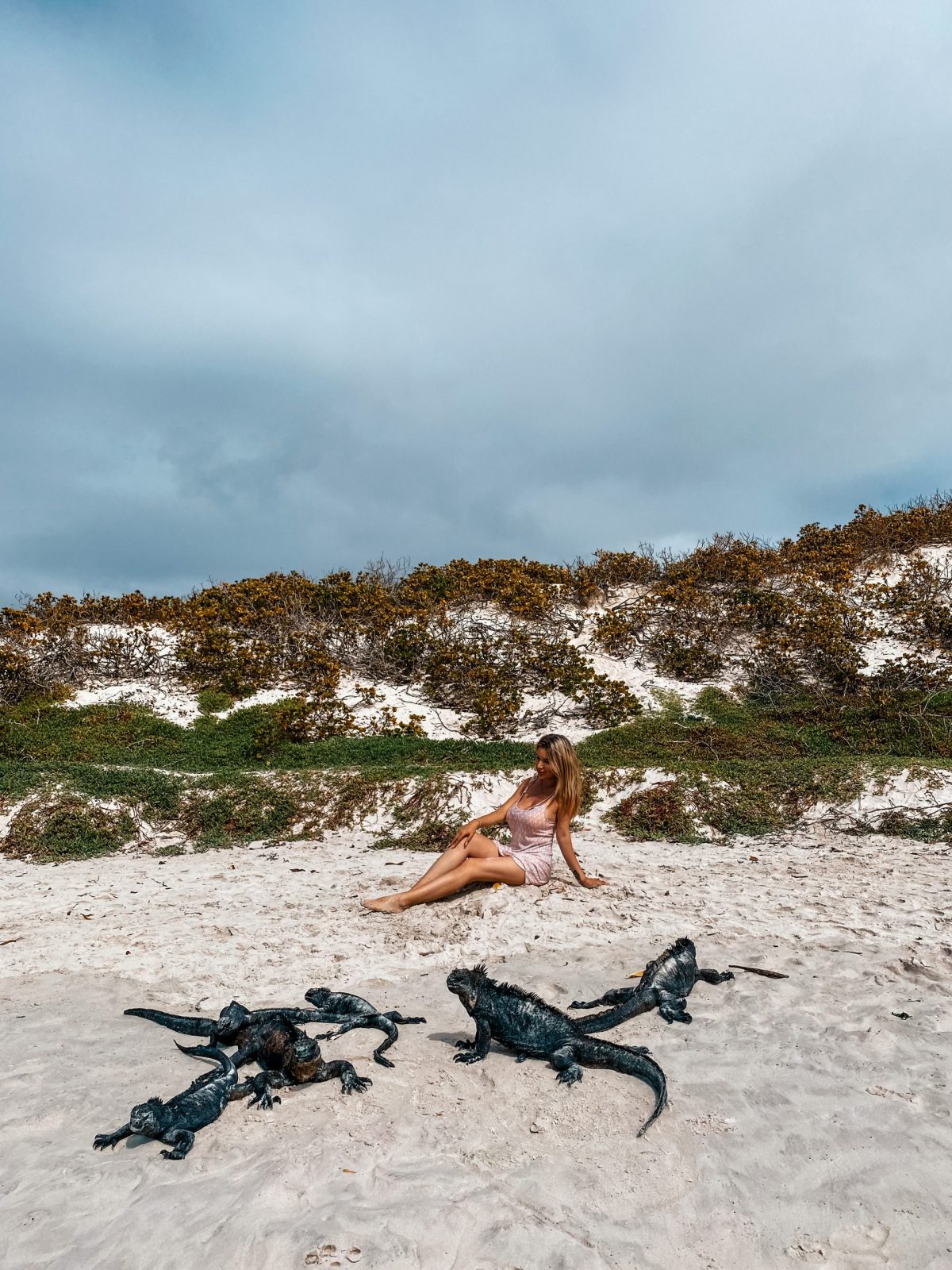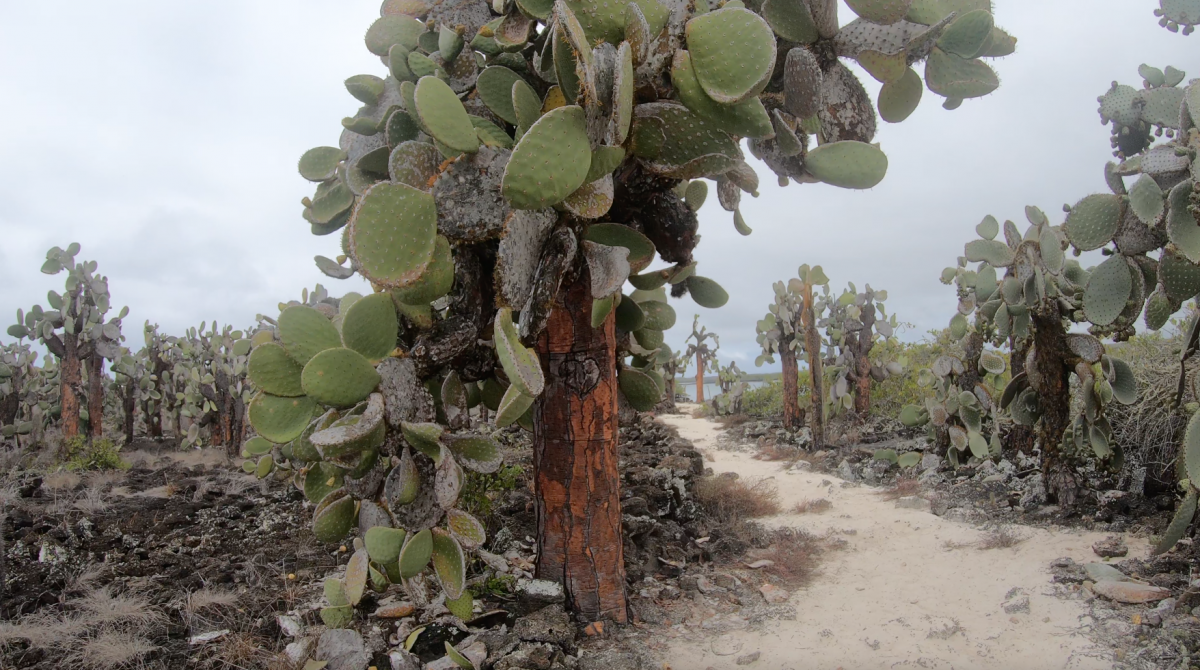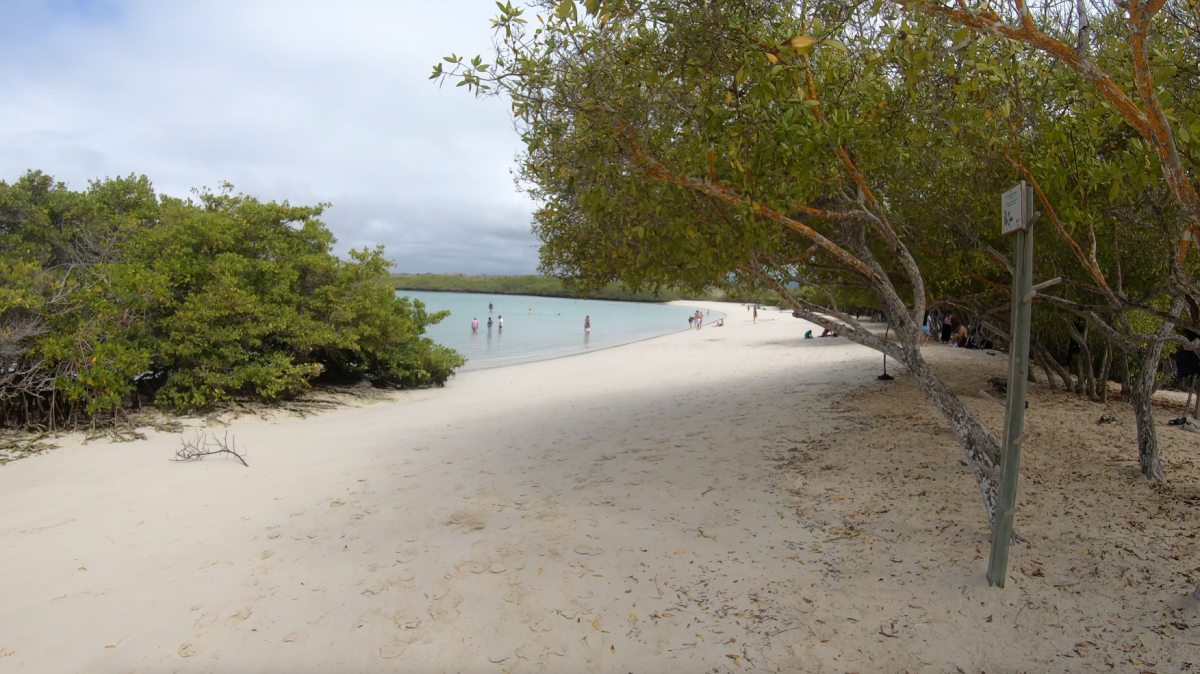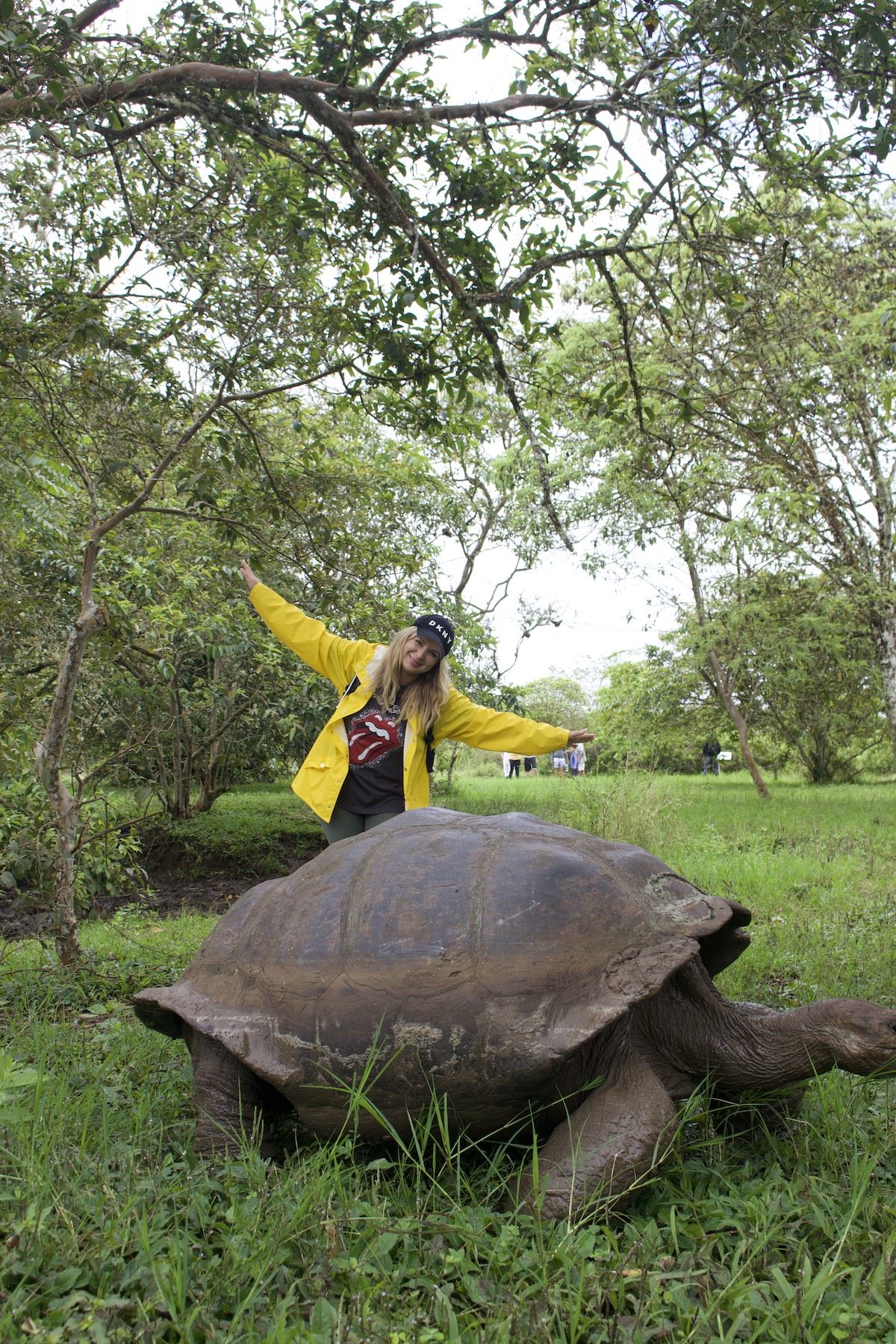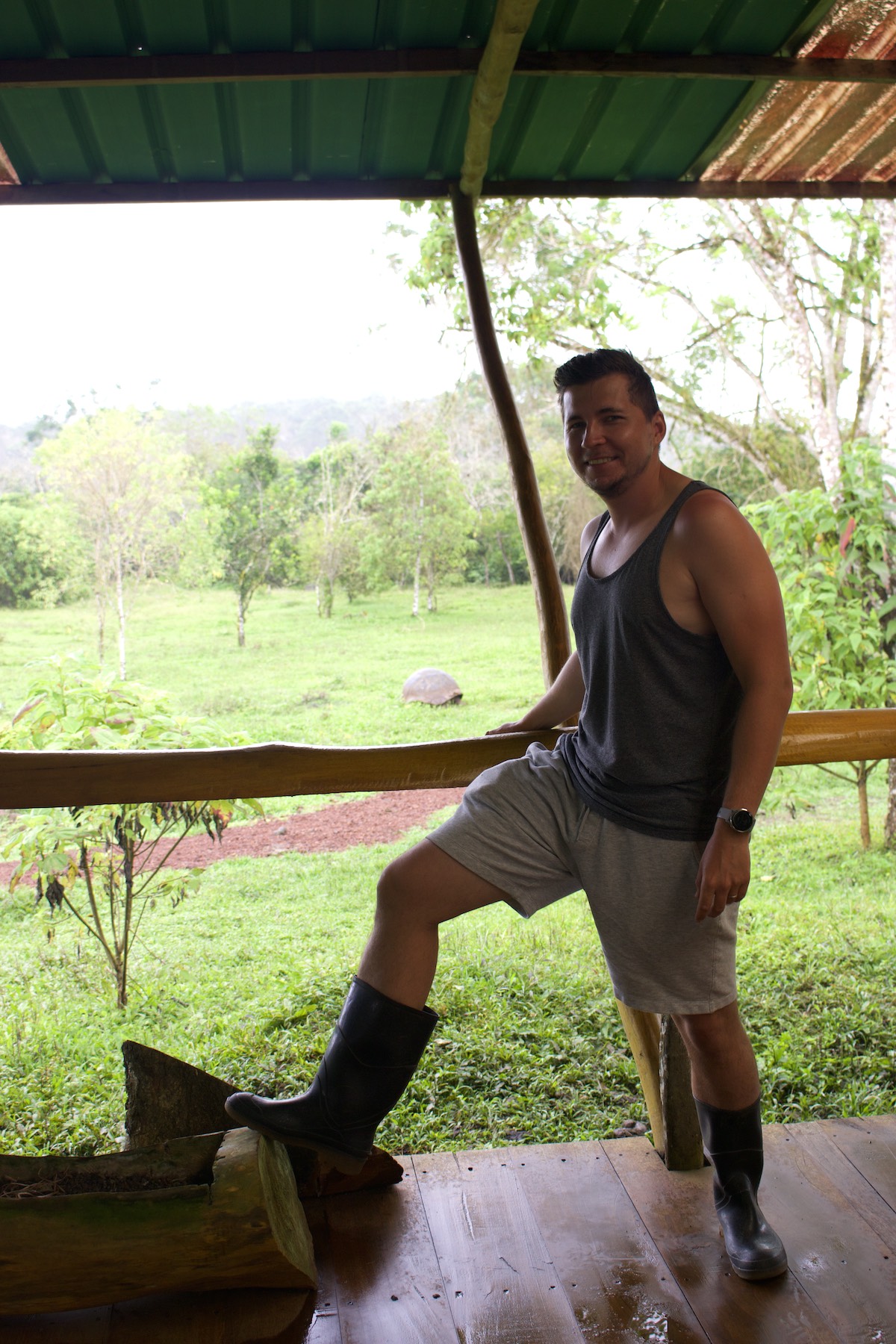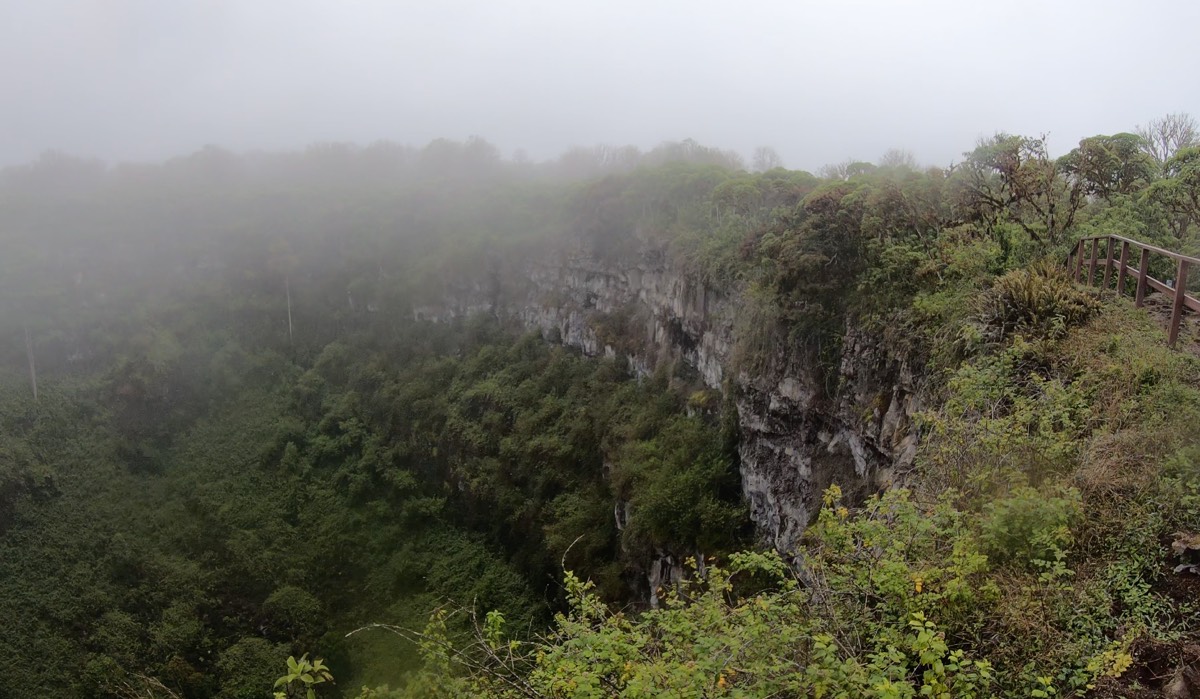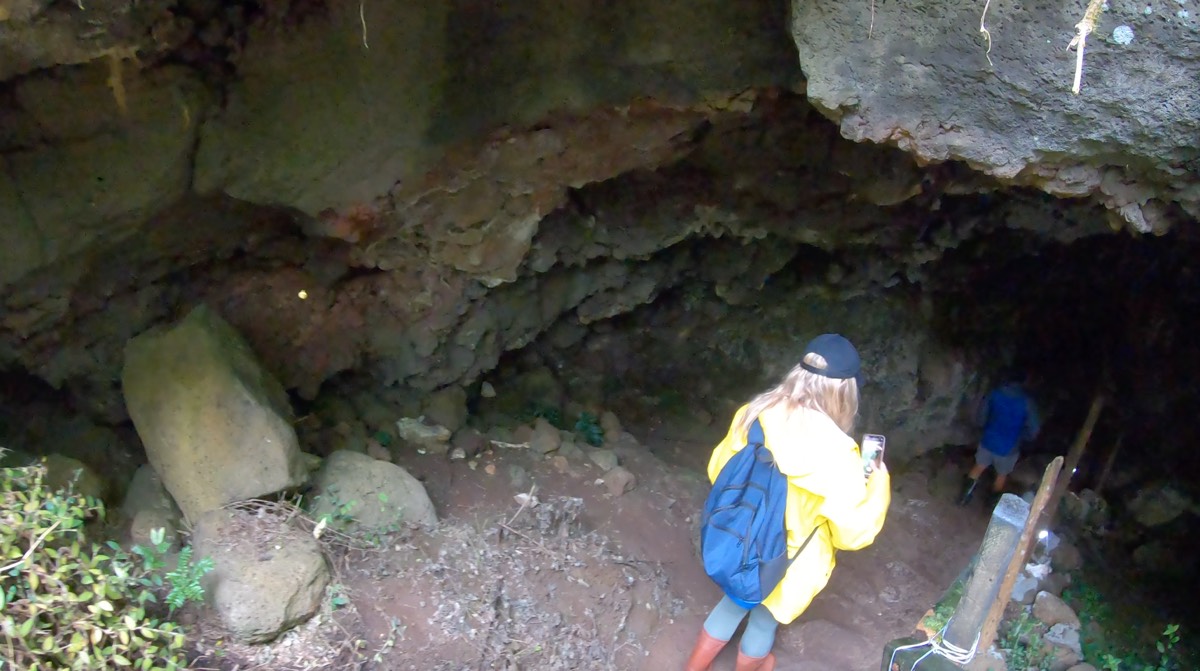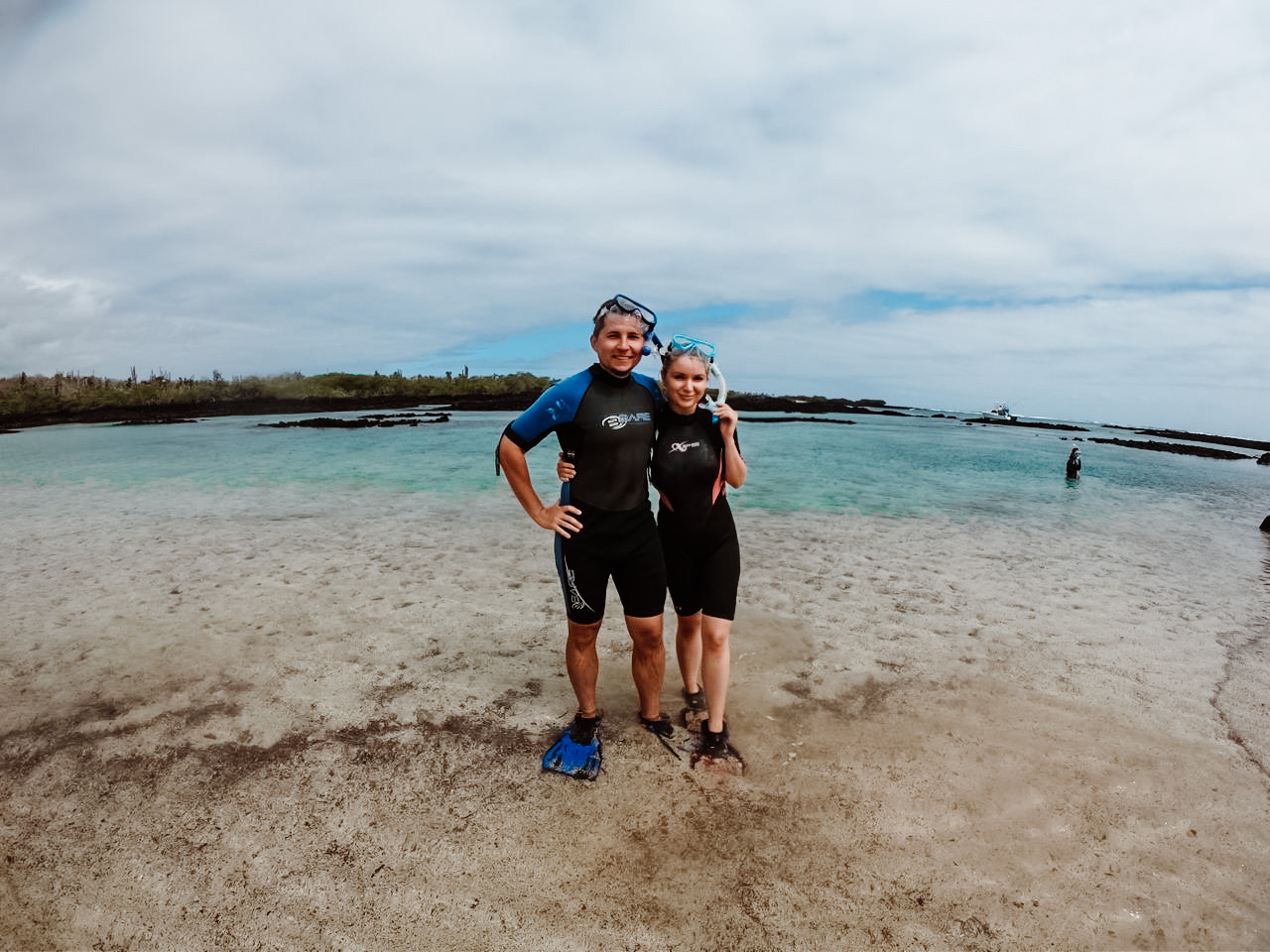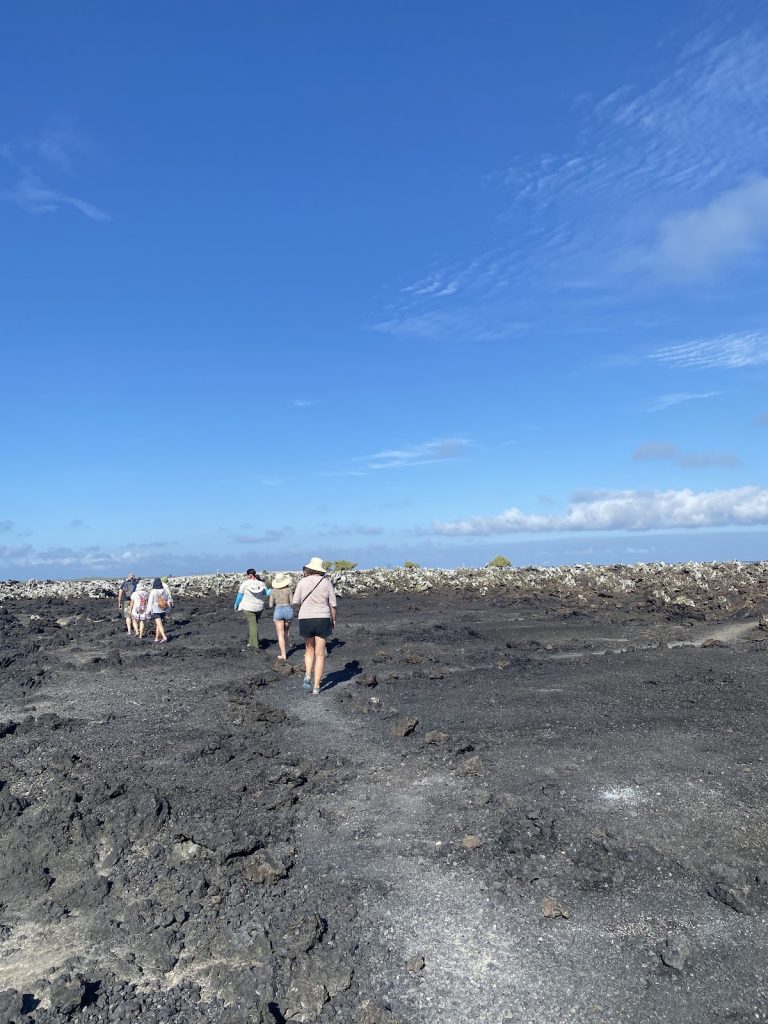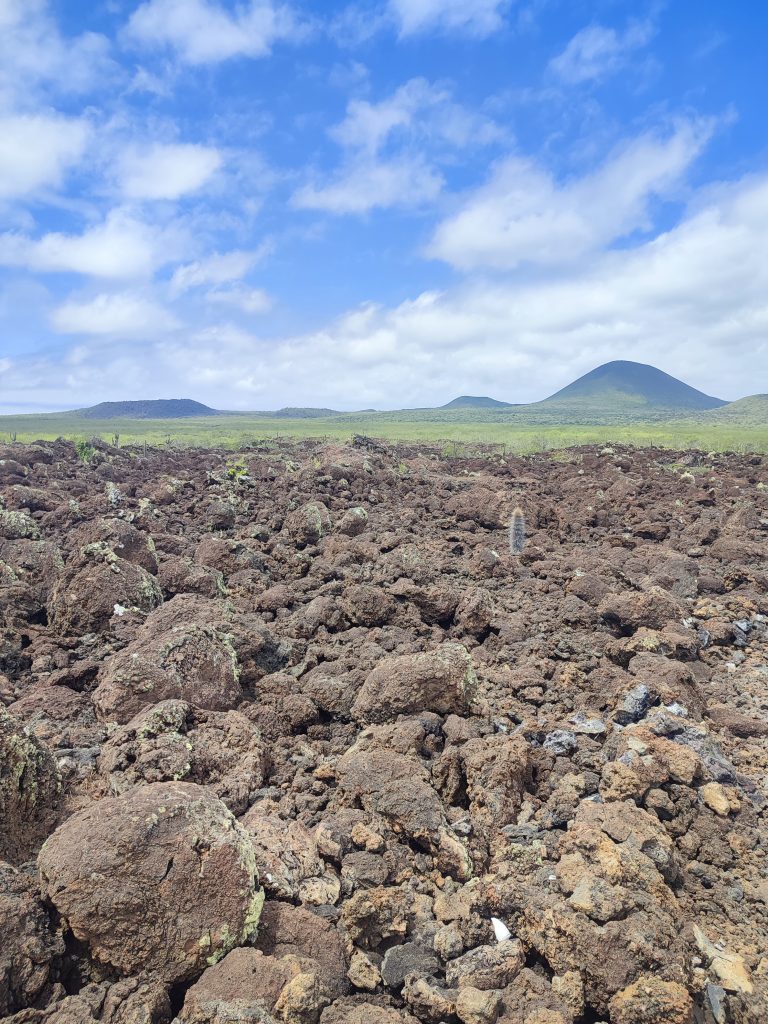Santa Cruz Island is the second-largest in the Galapagos archipelago and, honestly, my least favorite due to the crowds, noise, and overpriced restaurants in Puerto Ayora.
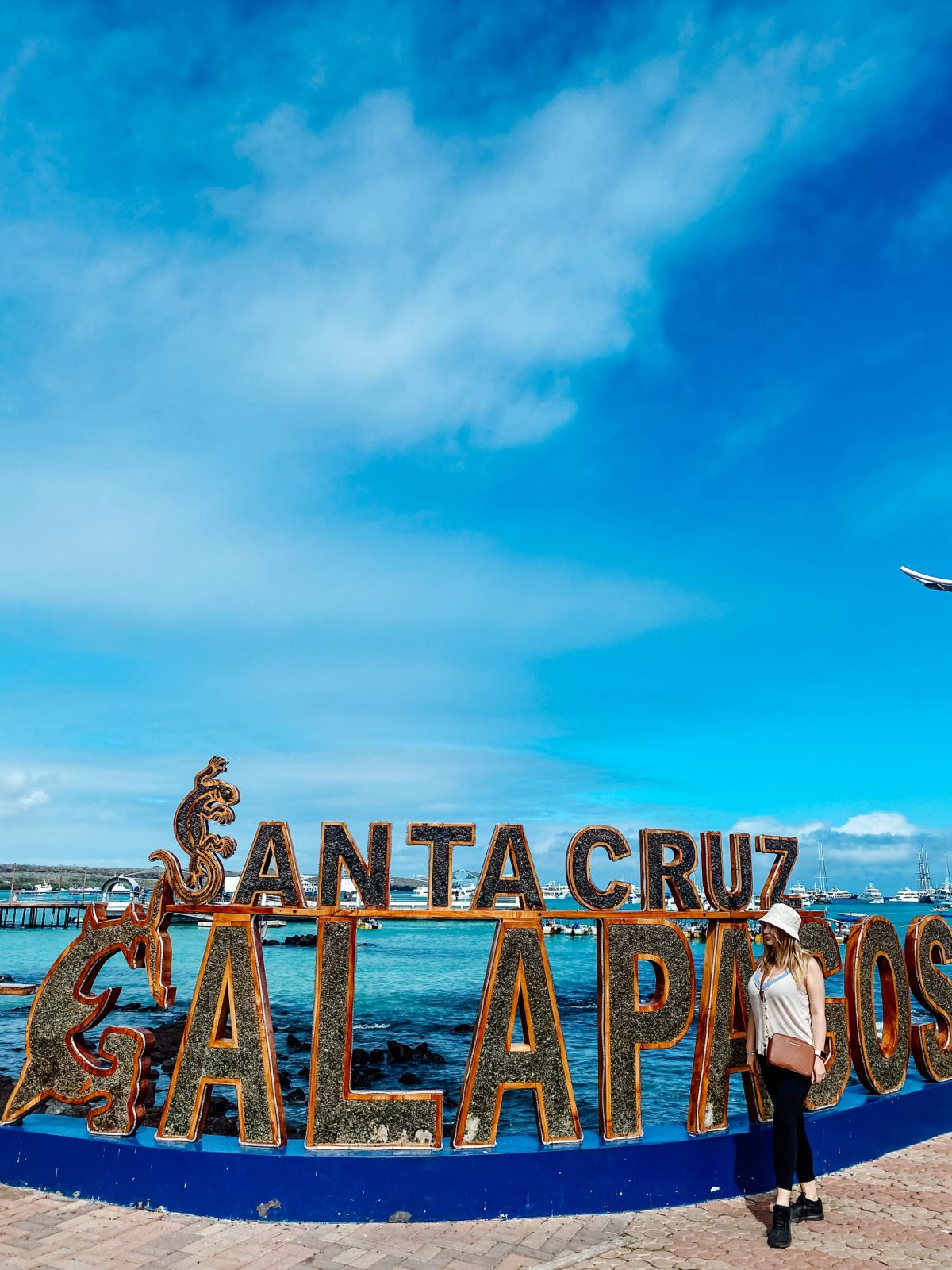
Despite this, it was our unavoidable home base during our Galapagos adventure. Why? Because Santa Cruz is the gateway to the most iconic day trips – Bartolome with its postcard views, North Seymour with its incredible bird colonies, and others I’ll detail below.
My wife and I spent $1,100 each during our week here, making some costly mistakes along the way. In this guide, I’ll share exactly how to avoid our blunders and save money while experiencing everything worthwhile on Santa Cruz Island.
I’ve personally visited every single destination accessible from this island, and I’ll give you my unfiltered opinion on which are truly worth your time and which you can skip. This isn’t your typical travel brochure – it’s the guide I wish I’d had before arriving! You can also check it out in my video about the whole trip on the Galapagos Islands:
Looking back, planning our Galapagos adventure was overwhelming – from choosing the best accommodations and day trips to figuring out logistics between islands. Skip the confusion I faced and get a FREE personalized Galapagos trip quote from my trusted local experts. They’ll help arrange everything from island tours to hotel bookings, ensuring you don’t miss must-see spots like the Tortuga Bay and highland reserves. Your booking supports both this blog and local Galapagos businesses.
Plan perfect trip to Ecuador & Galapagos
I spent countless hours researching everything about traveling to Ecuador, and I created this blog for fellow travel enthusiasts who want the best, most reliable information. But if you want to save time, we’ve partnered with the top local agency to plan your dream trip.
How to Get to Santa Cruz Island
By Air
Santa Cruz was the first island we explored during our Galapagos trip. We took a flight from Guayaquil to Baltra Island. Although Baltra is quite close to Santa Cruz, getting there involves a few extra steps.
- From the airport, you will need to grab a bus ($5 per person), that will take you to the boat station.
- Get a transfer to a ferry (USD 1 for public boats, USD 2 for private), which will take you directly over the channel to Santa Cruz Island.
- Finally, grab a public bus to Puerto Ayora (the main city in Santa Cruz Island) or grab a cab for $25.
When taking a cab, keep in mind that the travel can take anywhere from 35-40 minutes, so if you’re flying out of Baltra, allow at least 2 hours to go from Puerto Ayora to the airport.
By Ferry
Another convenient way to reach Santa Cruz is by taking a ferry from a nearby Galapagos island, such as San Cristobal. However, keep in mind that these ferries are not the large, spacious types you might expect. Instead, they are smaller boats, often with limited seating for around 30 passengers. They can get quite crowded, and the journey can be rough due to the choppy waves, which might not be ideal if you’re prone to seasickness.
We’ve covered more about the ferry schedules between the islands in detail in our comprehensive Galapagos Islands Guide.
Things to Do On Santa Cruz Island
Day Tours
Bartolome Island Day Trip
Bartolome Island is a stunning volcanic islet just off Santiago Island, and it’s often regarded as one of the best day trips in the Galapagos. The island offers some of the most breathtaking panoramas, and once you’re there, you can snorkel, swim, and hike up to iconic viewpoints. Due to its popularity and limited daily capacity, it’s essential to book this tour well in advance. We booked ours through Viator, which is a reliable option.
Most travelers rave about this tour, claiming it’s the top experience in the Galapagos. Unfortunately, we missed out on it because our boat sank a day before we were set to visit, and all the tours for the next four days were fully booked. It was a huge disappointment, but we’re definitely planning to try this tour on our next visit to the Galapagos!
Pinzon Island Tour
Pinzon Island is undoubtedly a must-do tour if you’re staying on Santa Cruz and love snorkeling. In my experience, snorkeling around Pinzon Island was hands down the best I’ve ever had! The waters are incredibly clear, and the abundance of marine wildlife makes it an unforgettable adventure.
Galapagos is famous for its rich underwater world, and being able to witness it up close is simply amazing. If you’re into snorkeling, you’ll absolutely love seeing all the sea life in action, just as we did!
No Name Rock, situated just south of Pinzón Island, offers a fantastic opportunity for snorkeling and scuba diving enthusiasts. The waters around this tiny islet are teeming with marine life, and it’s one of the best spots to see hammerhead and Galapagos sharks up close.
During our visit, we were also lucky to spot a variety of pelagic species, including rays and sea turtles, gracefully swimming around. Snorkeling here felt like being in a hidden underwater paradise — an experience I highly recommend if you’re looking for an adventure beyond the usual spots in the Galapagos!
Pinzón Island is covered with jagged rocks, low prickly vegetation, and very sparse tree growth, which my wife and I found to be quite striking. When we visited, we experienced the garúa, a thick mist that drapes over the higher islands during the dry season. This mist added a mystical touch to our visit, especially since Pinzón has a slightly higher peak compared to the other drier Galapagos islands. It was fascinating to see how this mist brought a hint of moisture to the otherwise harsh landscape.
Have questions about your upcoming Galapagos trip? Join my Galapagos Reddit community and ask other travelers who recently visited the islands. Get up-to-date tips, real experiences, and honest advice from other travelers (I ban tour agencies and resellers).
On Pinzón, you may see Darwin’s finches, Galapagos doves, vermilion flycatchers, Galapagos snakes, lizards, and giant tortoises.
Floreana Island Tour
On Floreana Island, we took in the stunning views of Cerro Pajas and wandered through the lush Scalesia Forest. It’s a lovely walking tour that felt almost otherworldly with its unique flora. We were particularly excited to spot the rare Medium Tree Finch, a species you can only find here.
A short walk near the Asilo de la Paz tourist center gave us the chance to see the giant tortoises being reintroduced to their natural habitat. It was heartwarming to watch these gentle giants slowly making their way through the area. As we continued exploring, we stumbled upon the old pirate caverns, which added a dash of adventure to our day.
We explored the four islets to the east and southeast of Floreana, which turned out to be incredible spots for encountering sea turtles, playful sea lions, and an array of colorful fish. The underwater life here was mesmerizing; we felt like we were swimming in a giant aquarium.
Enderby Islet was a highlight for us because it’s known for its large population of sharks. It was thrilling, yet a bit nerve-wracking, to see them so close. We also took a dinghy trip around Gardner Islet, where we were amazed by the impressive rock formations and massive caverns that made the landscape feel almost otherworldly.
Plazas Island Tour
We visited the Plazas Islands, which are made up of two small, crescent-shaped islands off the eastern coast of Santa Cruz: North Plaza and South Plaza. South Plaza Island is accessible to tourists and includes a visitor center, while North Plaza is reserved for research purposes and isn’t open to the public.
Although South Plaza is one of the smallest islands in the Galapagos, we were surprised by the diversity of wildlife it offers. We saw red-billed tropicbirds gracefully flying overhead, and the striking swallow-tailed gulls were a sight to behold. The island is also teeming with both land and marine iguanas, which we found lounging around the rocky shores and cacti-studded landscape. It was fascinating to watch them coexist in such a small area.
North Seymour Island Tour
North Seymour is a small island that we found to be an exceptional spot for observing marine birds in action. It’s a great fishing ground for these birds, which made it a fascinating stop during our trip. We noticed that many visitors, like us, come here specifically to witness the stunning variety of Galapagos bird species. The experience of seeing frigatebirds, blue-footed boobies, and other native birds was absolutely breathtaking and one of the highlights of our visit to the islands.
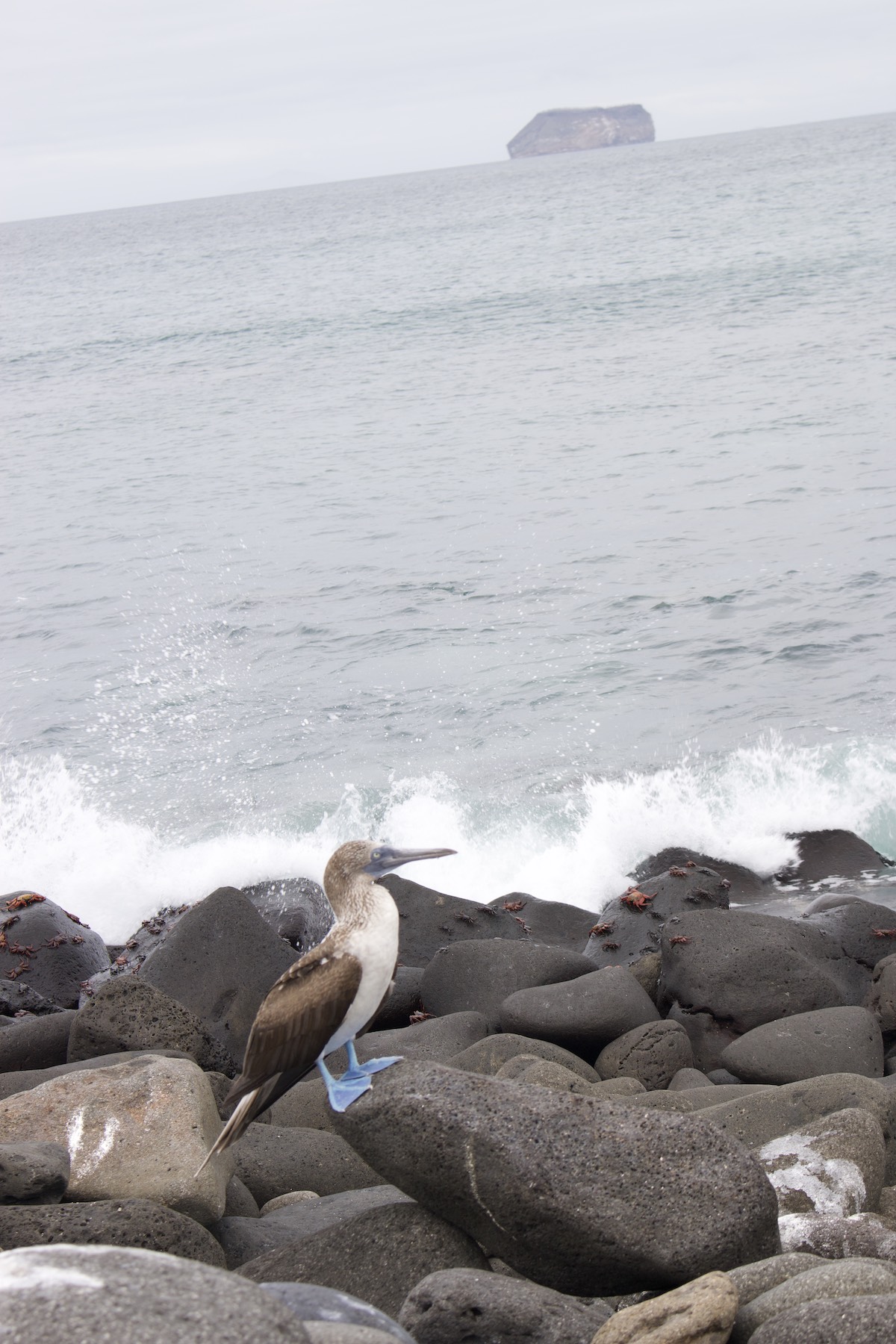
The spot we visited on North Seymour was incredibly close to a nesting area for Frigate Birds. One of the absolute highlights of our trip was getting to witness the famous mating dance of the Blue-Footed Boobies up close. It was truly mesmerizing to watch them perform their intricate dance, a memory we’ll always cherish.
On the south bank of Seymour, we walked through a beautiful Palo Santo grove where many birds nest. The grove also offered a stunning view of the canal formed between Bartolomé and Seymour islands. It was the perfect place to pause and take in the serene surroundings, with the mix of bird calls and the scent of Palo Santo in the air.
Santa Fe Island Tour
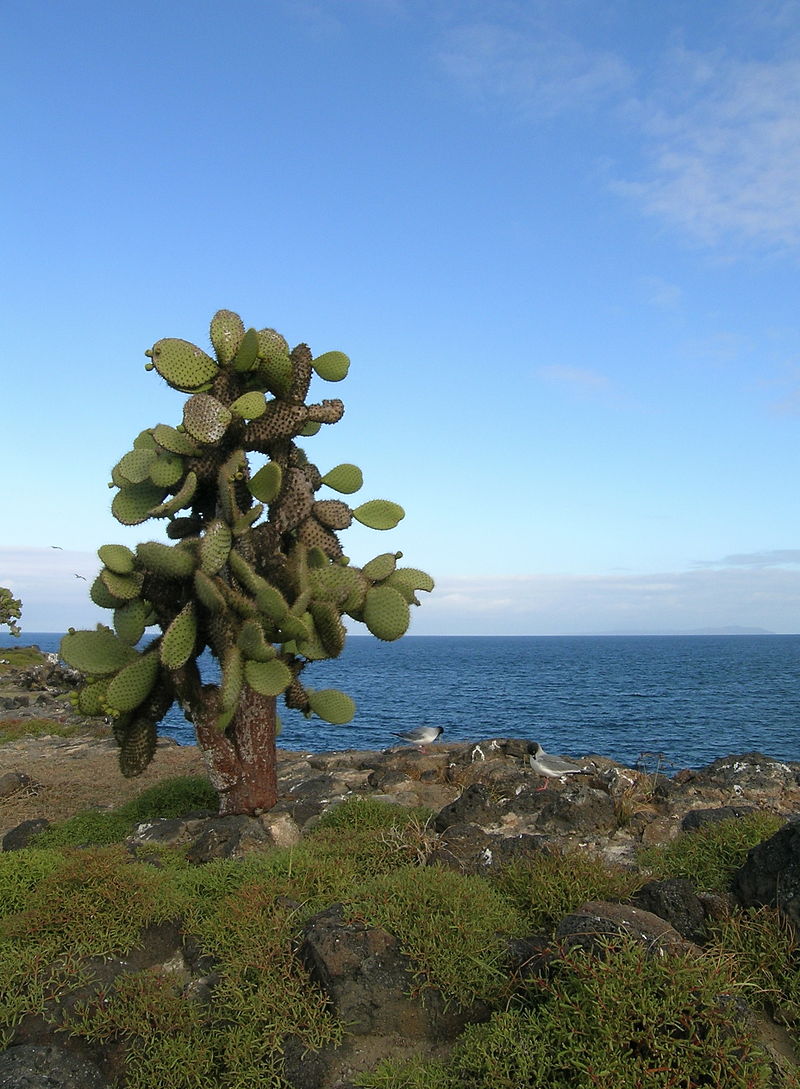
One of the things my wife and I loved about Santa Fe Island was its unique flora. The Optunia Echios cacti, which can grow impressively large, really stood out. The island is densely populated with these prickly pears, making it a rare sight that drew the attention of every photographer, including us. We couldn’t resist capturing a few shots ourselves!
But Santa Fe isn’t just about the plants. The island is also known for its land iguanas. We were thrilled to learn that this is one of the few places where you can see two distinct varieties of land iguanas roaming freely.
While exploring Santa Fe, we found that the activities here are a mix of walking, snorkeling, and diving, much like on other Galapagos Islands. We hiked along the two trails available—one that goes inland and another that loops along the picturesque beach. After the walk, we couldn’t wait to cool off, so we headed to Barrington Bay. Swimming and snorkeling in the cove was a perfect way to end our day, surrounded by the island’s natural beauty.
Sombrero Chino Island Tour
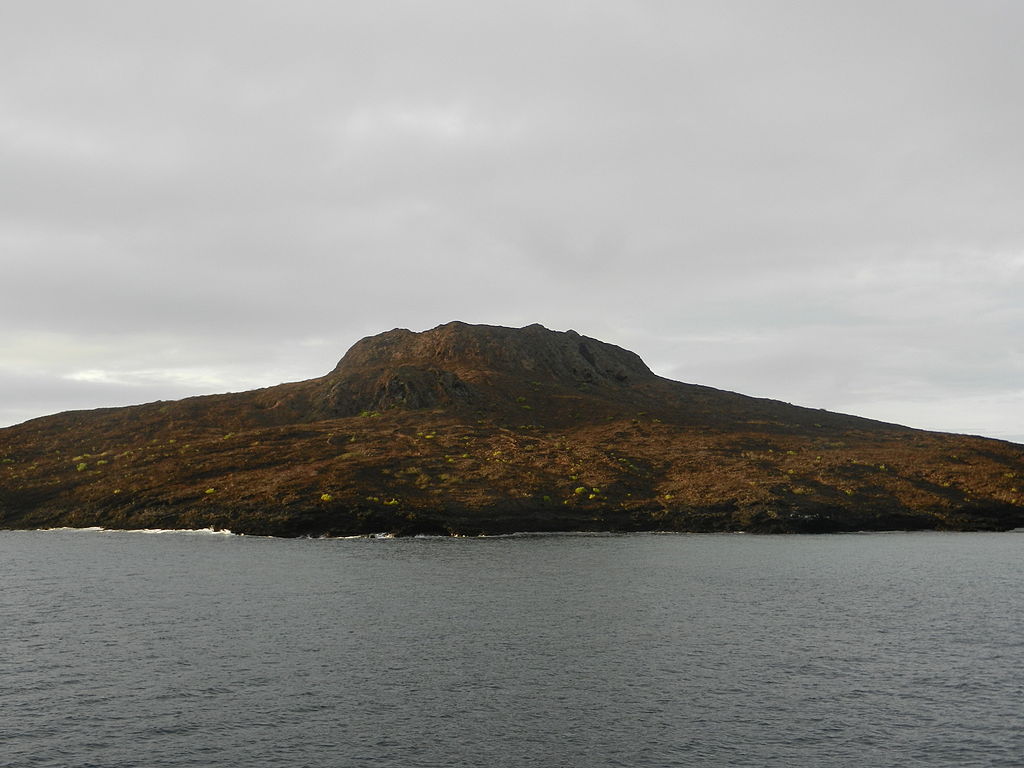
Sombrero Chino, or “Chinese Hat,” immediately intrigued my wife and me with its unique shape—it truly looks like an old-fashioned Chinese hat rising gracefully from the clear blue waters. As we approached, anchored in the serene strait near Santiago Island, the view was simply stunning.
The hike here is short but rewarding, ending with a cliffside vista where we could watch the waves crashing dramatically against the rocks below. It felt like nature’s symphony, and we just stood there, soaking it all in.
But the real highlight of Sombrero Chino was definitely the snorkeling. We had heard from seasoned guides that it’s one of the best spots in the Galapagos, and they weren’t wrong. The water was incredibly calm, yet deep enough to attract all kinds of marine life. We were lucky enough to spot a few white-tipped reef sharks gliding gracefully below us. And, to our delight, we even caught a glimpse of the rare Galapagos Penguins darting through the water—an unexpected treat that made our day truly unforgettable!
Places to Visit On Santa Cruz Island by Land
Before we list the popular tourist attractions in Santa Cruz, we will briefly describe the tourist hub, Puerto Ayora.
Puerto Ayora
Puerto Ayora is a lively port town brimming with restaurants, shops, and accommodations that suit all kinds of travelers. We found it to be the perfect base for exploring the Galapagos Islands. Whether you’re looking for a quick bite or a sit-down dinner, there’s plenty of variety to choose from.
One of the key highlights here is the Charles Darwin Research Station, located alongside the Galapagos National Park headquarters. These two organizations work hand in hand to protect and conserve the unique biodiversity of the islands. I was truly impressed by their efforts to preserve the natural beauty and wildlife of the Galapagos. Visiting the research station was both educational and inspiring, especially seeing the ongoing projects aimed at maintaining the delicate balance of the ecosystem.
The Santa Cruz Galapagos Airport (GPS) is actually located on Baltra Island, not on Santa Cruz itself. This was a bit surprising for us when we first arrived. To reach Santa Cruz, you need to cross the Itabaca Canal, which separates the two islands. Thankfully, there’s a reliable ferry service that makes the crossing quick and straightforward.
We flew in from Guayaquil, but there are also regular flights from Quito. The process of getting from the airport to Santa Cruz is a bit of an adventure itself — after landing on Baltra, you’ll take a bus to the ferry, then cross the canal, and finally catch another bus or taxi to reach Puerto Ayora. It’s all part of the unique experience of traveling in the Galapagos!
Puerto Ayora has all the essentials for travelers: a medical center, ATMs, grocery store, pharmacy, and even a health spa. It’s well-equipped to make your stay comfortable, whether you’re here for a quick visit or a longer stay.
There are several places you can visit that are close to Puerto Ayora:
The Charles Darwin Research Station
Each year, the Charles Darwin Research Station draws scientists and volunteers who conduct crucial research to help preserve the unique species and ecosystems of the Galapagos Islands.
The Charles Darwin Research Station, a short 15-minute walk from Puerto Ayora, houses the Fausto Llerena tortoise breeding center. During a visit, you can learn about the different stages of Galapagos tortoise development, from hatchlings to adults. This breeding center is crucial for the conservation of these giant tortoises. However, if you’re pressed for time, I would recommend exploring other spots on the island where you can observe turtles in a more natural setting, as they offer a richer experience.
Las Grietas
Las Grietas is hands down the best swimming spot on Santa Cruz Island, conveniently close to Puerto Ayora. The site features three stunning crystal-clear pools nestled between high volcanic cliffs. Both locals and visitors love coming here to cool off while soaking in the gorgeous surroundings. It’s perfect for a few relaxing hours of swimming, snorkeling, or even cliff diving if you’re feeling adventurous!
The water at Las Grietas is a unique mix of seawater flowing in from one side and freshwater seeping in from the other. Thanks to the towering rock walls that surround it, the water here is incredibly clear and calm, with no strong currents—making it perfect for a peaceful, refreshing swim.
There are also really cool salt mines along the way:
On weekends, Las Grietas is very popular with locals, so get there early to avoid long lines.
Laguna de las Ninfas
Laguna de las Ninfas, or Nymph’s Lagoon, is a serene saltwater lagoon nestled in Puerto Ayora. The lagoon is fed by a narrow channel flowing through rocks and lush vegetation. A peaceful walkway encircles the lagoon, winding through mangroves with informative signs about each tree species. Along the way, there are several viewing platforms where you can relax, enjoy the tranquility, and spot marine life in the clear waters.
Beaches
Of course, the most fun thing to do on an island is swimming! There are several beaches on Santa Cruz island that you would surely love. All of them boast white sand and pristine waters.
Tortuga Bay
Tortuga Bay earned its name from the black sea turtles that frequently come ashore to lay their eggs. Beyond the turtles, the area is teeming with wildlife — you can spot white-tip sharks gliding through the waters, marine iguanas basking on the rocks, and flamingos wading in the shallows.
Tortuga Bay is a stunning tropical beach southwest of Puerto Ayora, often ranked among the world’s best. The trailhead is conveniently close to town, leading you through coastal mangroves and cactus woodlands before revealing the expansive white sand beach.
The environment opens out into a tropical paradise after the mile and a half trek, attracting both tourists and wildlife.
We chose to explore Tortuga Bay on foot, taking the 2.8-kilometer trail that took us about an hour. If walking isn’t your thing, there’s also an option to take a boat from Puerto Ayora’s harbor. We saw a small ticket booth there where you can purchase boat tickets, but keep in mind that once you board, you’re on a time limit since the boat returns to the harbor on schedule.
As we arrived at Playa Brava, the first stretch of white sand greeted us. We were amazed by the sight of marine iguanas sunning themselves on the soft, warm sand. The locals often surf here, and we enjoyed watching them catch waves as the sun began to set over the beautiful blue waters.
We continued our walk to Playa Mansa, a serene lagoon tucked at the end of Playa Brava. Here, we were greeted by a large colony of marine iguanas lounging on the rocky shore. The calm, protected waters were perfect for a relaxing swim, and we noticed others enjoying kayaking in the lagoon. If you’re up for it, you can rent a kayak by the hour. We found it to be the ideal spot to unwind after our hike.
Garrapatero Beach
We decided to explore El Garrapatero Beach, located northeast of Puerto Ayora. To reach this secluded spot, we had to walk for about 15 minutes through a grove of tall cacti, with the trail also lined by manchineel trees. These trees are known to be among the most toxic in the world, so we made sure to steer clear of their sap and fruit, which can cause severe skin reactions.
Since the trailhead is over 10 kilometers from town, we opted to take a taxi to save time. Renting a bike is another popular option if you’re up for a bit of exercise. Once we arrived, we were pleasantly surprised to find the beach nearly empty. It was the perfect place to relax in solitude, especially if you visit on a weekday.
Bachas Beach
Bachas Beach was one of our favorite stops during our Galapagos trip. We arrived early in the morning, hoping to spot some of the famous sea turtle tracks left behind during the nesting season. The white sand was so pristine, and the turquoise waters were incredibly inviting. We were lucky to see a few marine iguanas lounging on the shore, and even had a sea lion swim by as we waded in.
The best part was snorkeling in the calm waters. We were surrounded by colorful Sally-lightfoot crabs scurrying over the black lava rocks and spotted a few reef sharks swimming deeper in the clear water. Just behind the beach, we took a short walk to a saltwater lagoon, where we caught a glimpse of a few pink flamingos wading gracefully. It was a peaceful way to end our visit, and I couldn’t resist capturing a few photos of the stunning scenery.
Playa de Los Perros
We took a quick water taxi ride from Puerto Ayora to reach Playa de Los Perros. As soon as we arrived, we were greeted by dozens of marine iguanas sunbathing on the rocks. The small pool nearby was filled with white-tipped reef sharks lazily gliding through the water.
We couldn’t resist snorkeling in the clear waters. The visibility was incredible, allowing us to see vibrant schools of fish darting around beneath us. At one point, I looked up to see blue-footed boobies diving gracefully into the water, hunting for their next catch. It was a truly magical experience, surrounded by both marine life and stunning scenery.
Playa de Los Alemanes
We took a quick water taxi from Puerto Ayora to reach Playa de Los Alemanes. The ride across Academy Bay was short and scenic, and as soon as we disembarked, we found ourselves on a beautiful boardwalk leading to the beach. This spot turned out to be perfect for a relaxing swim and some casual snorkeling.
The waters were calm and inviting, making it an ideal spot to unwind. We also saw people kayaking and even a few surfers catching small waves in the distance. This beach became one of our favorite chill-out spots on Santa Cruz, especially since it’s so easy to access from town.
Dive Sites
Since diving is such a big draw in the Galapagos, I’ve put together a list of the top diving spots on Santa Cruz Island for those who are into it. However, I have to admit, I didn’t personally dive here because I’m not a big fan of scuba diving. But even if it’s not my thing, I’ve heard from other travelers that Santa Cruz offers some incredible underwater experiences for those who are up for it!
Guy Fawkes Rocks
Guy Fawkes Rocks was one of the spots we considered exploring, but since I’m not much into scuba diving, we decided to skip it. However, I learned that it’s quite the diving gem, with its dramatic coral slopes and underwater caverns teeming with white-tipped reef sharks, green sea turtles, and even playful sea lions. The site goes down to depths of around 80 feet, making it a popular choice for those looking to experience the diverse marine life off Santa Cruz’s northwest coast.
Punta Carrión
We had heard great things about Punta Carrión, especially since it’s known as a fantastic dive site even for beginners. While we didn’t dive ourselves, I was intrigued by stories of the vibrant marine life there — from marbled rays to curious sea lions and even the occasional hammerhead shark! The spot reaches depths of up to 90 feet, and if you’re lucky, you might even catch a glimpse of dolphins swimming nearby during the garúa mist season. It’s one of those places where you can truly feel the magic of the Galapagos underwater world.
Gordon Rocks
Gordon Rocks is often considered the ultimate diving experience in the Galapagos, especially for those seeking a bit of thrill. Located just off the eastern coast of Santa Cruz, it’s a spot I’d only recommend for intermediate to advanced divers due to its strong currents. We heard that it’s a magnet for white-tipped, Galapagos, and even hammerhead sharks, making it one of the most exciting dive sites around. While I personally didn’t dive here, the stories we heard from fellow travelers made it sound like an unforgettable experience for seasoned divers.
Santa Cruz Highlands
You can take a cab for $35 that will get you to three sports: El Chato Tortoise Reserve, Twin Craters, and Lava Tunnels.
El Chato Tortoise Reserve
El Chato Tortoise Reserve is located near the small town of Santa Rosa. La Caseta and Cerro Chato are the two sections of the reserve.
When we explored Santa Cruz, we found that the trails at Cerro Chato are the easiest to navigate since they’re clearly marked. However, the trails at La Caseta are a different story—they’re more challenging due to being overgrown. We heard from locals that Galapagos National Park rangers sometimes close off access to La Caseta with temporary fences. This is done to protect the Giant Tortoises, especially from threats like wild pigs and dogs. If you’re planning a visit, be prepared for these occasional closures and check ahead of time.
Twin Craters (Los Gemelos)
During our time on Santa Cruz, we visited Los Gemelos, also known as the Twin Craters. These two enormous volcanic sinkholes with collapsed ceilings were a sight to behold, surrounded by dense Scalesia forest. Located just before reaching the town of Santa Rosa, the area is alive with birdlife—you can often spot Darwin’s finches, vibrant Vermilion flycatchers, and even short-eared owls if you’re lucky.
We took the trail that loops around the rims of both craters, walking under the shade of towering trees that reach up to 65 feet high. The Scalesia trees are unique to the Galapagos, and thanks to the ongoing conservation efforts, the forest here remains one of the largest of its kind on the islands. It felt like stepping into a hidden world, filled with the sounds of birds and rustling leaves.
Lava Tunnels
We explored the Santa Cruz highlands and couldn’t miss the impressive lava tunnels, which are the largest accessible ones in the Galapagos. Walking inside these ancient tunnels felt like stepping into another world—they were formed over a million years ago as surface lava cooled and solidified, while hotter, faster-moving lava continued to flow beneath, leaving these hollow tubes behind.
As we made our way through, we were grateful we brought a flashlight since the tunnels are pitch dark inside. I had to watch my step carefully, especially in sections where the tunnel ceilings were starting to collapse due to erosion. The experience was a bit eerie but absolutely fascinating—definitely a must-see if you’re exploring the highlands of Santa Cruz!
Galapagos Coffee Farms
During our time in the Santa Cruz highlands, we decided to visit a couple of the local coffee farms, like Lava Java and El Trapiche. It was such a unique experience to walk through the lush plantations and see the entire coffee-growing process, from the tiny seedlings to the rich, aromatic beans ready for brewing.
At El Trapiche, we got a bonus treat—this farm also cultivates sugar cane. Watching the old-fashioned, mule-powered grinder in action was like stepping back in time. I found it fascinating to see how they extract the sugar juice, which they then turn into everything from sugar to local spirits. If you’re into coffee or just curious about traditional farming methods, this is definitely worth adding to your Santa Cruz itinerary!
Steve Devine’s Butterfly Farm
During our journey between Santa Rosa and Bellavista, we made a stop at Steve Devine’s Butterfly Farm. This private farm was a delightful surprise, with tortoises freely roaming the vast estate. The Devine family, who were among the earliest settlers on Santa Cruz, made this place their home back in 1949.
Beyond just butterflies, the farm is a haven for bird lovers. We spotted various Galapagos birds like finches, owls, and mockingbirds. It was such a peaceful experience wandering through the 500-acre property, surrounded by nature. After exploring, we took a break at their quaint café, where we enjoyed a relaxing coffee before heading to our next adventure.
Trust me, Santa Cruz Island offers so much more than most visitors discover – I wish I’d known about this local agency before spending hours researching the best tours, accommodations and timing for each activity! Get a FREE expert itinerary that helps you make the most of your Galapagos adventure. Your booking supports this blog and local Galapagos communities.
Where to Stay on Santa Cruz Island
The main street, Avenida Charles Darwin, is bustling with stores, cozy restaurants, and offers easy access to the harbor. If you’re staying nearby, you’ll be right in the heart of the action, with everything conveniently within walking distance. For those feeling overwhelmed by the variety of choices, we’ve put together a list of a few standout hotels that we personally found to be great options during our stay.
Galápagos Dreams
The Galápagos Dreams is a budget-friendly hostel located right in the heart of town. Everything is a walking distance of the place.
Their rate starts at USD50 (check ).
Finch Bay Hotel
If you’re after an upscale and eco-friendly experience, Finch Bay Hotel is an excellent pick. National Geographic has recognized it as one of the most unique lodges globally. We found it to be a tranquil escape, though it’s not directly in the main town. You’ll need to take a water taxi to get around, but the good news is that the water taxi is included in the cost of your stay, making it both convenient and hassle-free.
Rates at Finch Bay are roughly around USD600 above (check the current price here).
We rated this hotel as the best option to stay on the Galapagos Islands.
Hostal Galápagos Morning Glory
If you’re looking for a budget-friendly stay, Hostal Galápagos Morning Glory is an excellent choice. It’s conveniently located within a 15-minute walk from most popular Galapagos restaurants, shops, and beaches. We appreciated the cozy vibe here, especially the lounge area with hammocks where you can relax after a day of exploring. Plus, the free Wi-Fi is a nice perk for staying connected.
The average nightly rate is around USD60. Check the current price here.
Hotel Ikala
This amazing hotel is right in the middle of everything; all tourist essentials are within walking distance. It also provides nice mid-range accommodations and complimentary bicycles that you may use to travel about.
Their rates start around USD200. Check the current price here.
Where to Dine on Santa Cruz Island
Food is an important aspect of a trip so we made a list of cafés and restaurants that you should try when you are in Santa Cruz.
La Garrapata
Dine at La Garrapata, a local favorite, for a real Galápagos Islands experience. It was one of the island’s earliest open-sided and relaxing restaurants, and it serves a variety of seafood specialties.
ANKER
We had a delightful dining experience at ANKER, where they serve traditional Galápagos cuisine crafted from fresh, seasonal island ingredients. The 5-course dinner was a real treat, but you can also choose from their à-la-carte menu if you prefer. If you’re into seafood, like we are, you’re in for a treat here. Their fish dishes were absolutely delicious, and we loved pairing them with their reasonably priced drinks.
Bahia Mar
We had an unforgettable meal at Bahia Mar, located right on the beach. They specialize in Ecuadorian cuisine but also offer a range of international dishes to suit various tastes. Dining here was a highlight of our trip, especially with their fresh lobster — it’s hard to beat enjoying such a delicious meal while sitting directly by the water, listening to the waves. The ambiance truly added a special touch to the experience!
Isla Grill
Isla Grill is the place to go if you want to have a relaxed supper with a variety of cuisine selections. They serve sushi, steak, and vegetarian alternatives at reasonable prices. It’s also a fun place to get a drink.
De Sal y Dulce
De Sal y Dulce is an excellent choice for coffee and dessert. If you need a little afternoon delight, coming to this place is worth your time. Try their cappuccino and pair it with their brownies.
1835 Coffee Lab
Coffee and tea lovers will definitely enjoy the 1835 Coffee Lab. This shop is one of my favorite places on the island to have a cup of coffee or tea. Not only do they make a superb cup of coffee, but they also promote and distribute coffee culture in the Galápagos Islands and Ecuador.
Santa Cruz Brewery
We had a blast at Santa Cruz Brewery — it’s a must-visit for craft beer lovers! The beer selection was fantastic, and they pair it with light bites, live music, and fun activities. It’s a lively spot we didn’t expect to find in the Galapagos, but it was the perfect way to wrap up an adventurous day. Definitely worth checking out if you’re in the mood for some good brews and a great atmosphere!
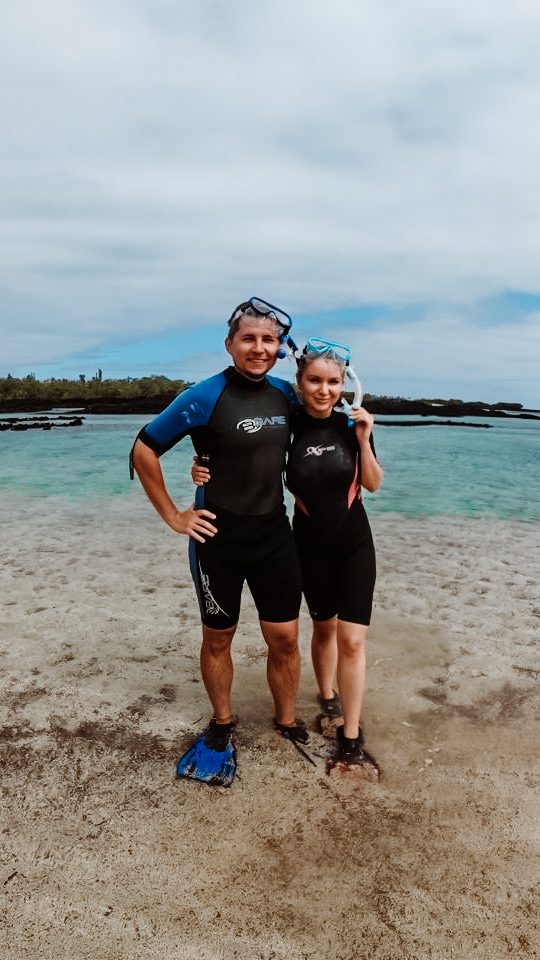
Planning trip to Galapagos Islands?
My wife and I spent two weeks on these magnificent islands, visited nearly every possible tour, and explored as much as we could. I shared all the important details in my comprehensive Galapagos Islands Travel Guide, where I cover everything you need to know about planning a trip to the Galapagos.
Galapagos Islands travel might surprise you with extra fees to enter the islands, the complicated logistics between islands, booking tours, and knowing which spots are free to explore and which ones are not. I’ve covered it all in this Galapagos Travel Guide.
Also, if you’re planning a trip to the Galapagos, make sure to use my link for discounted hotel prices via Booking.com. It really helps support my blog!
Bottom Line
Plan perfect trip to Ecuador & Galapagos
I spent countless hours researching everything about traveling to Ecuador, and I created this blog for fellow travel enthusiasts who want the best, most reliable information. But if you want to save time, we’ve partnered with the top local agency to plan your dream trip.
Santa Cruz Island was the highlight of our Galapagos adventure! It’s truly one of the best places to explore solo or with loved ones. The island offers a perfect mix of wildlife encounters, exciting activities, and relaxing moments by the sea.
Puerto Ayora, in particular, has this lively charm. We spent hours browsing souvenir shops, enjoying open-air dining, and chatting with friendly locals. It’s a vibrant town where you can unwind after days of island hopping.
We recommend staying here for a few days, either before or after your Galapagos cruise — we did, and it was an excellent decision!


